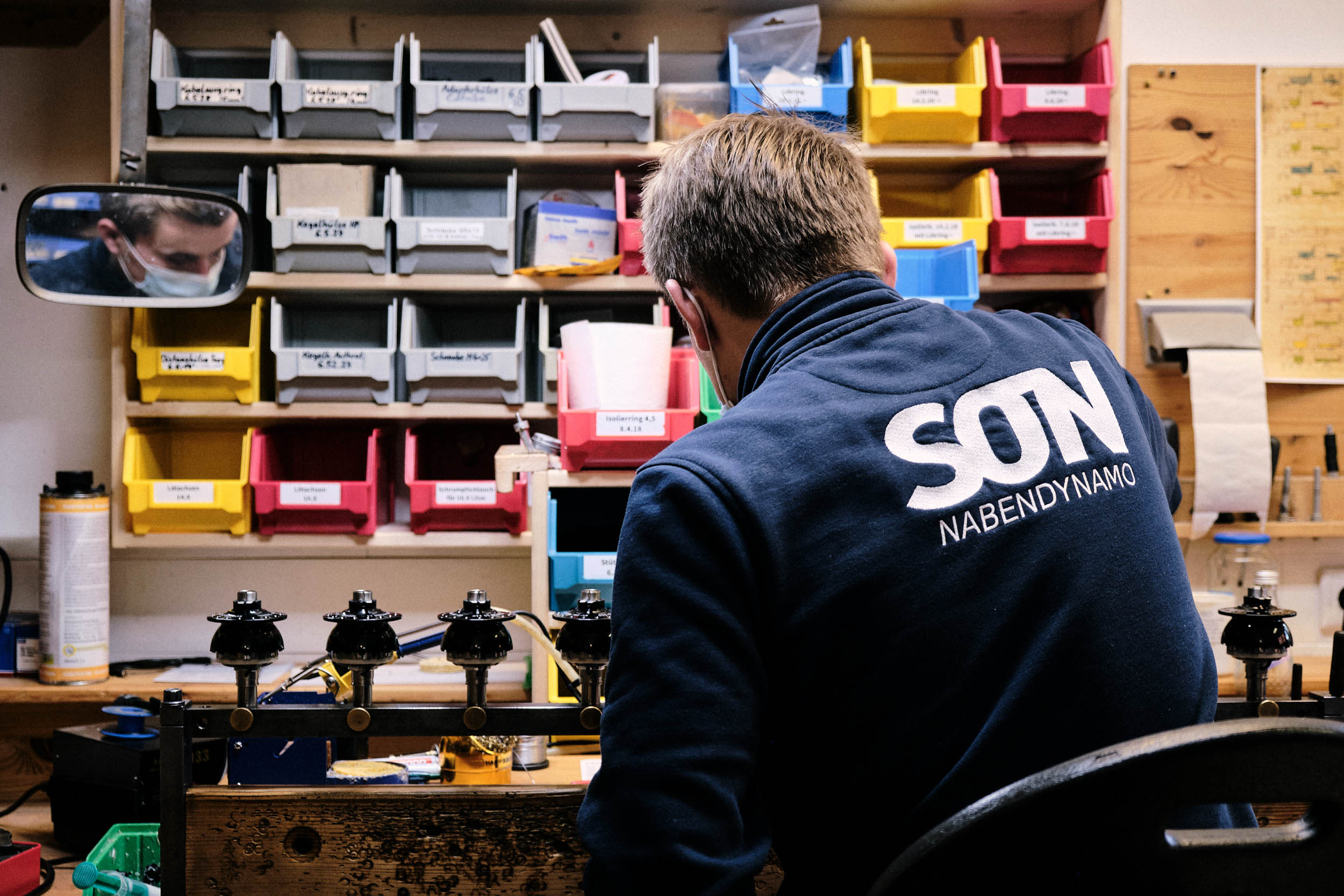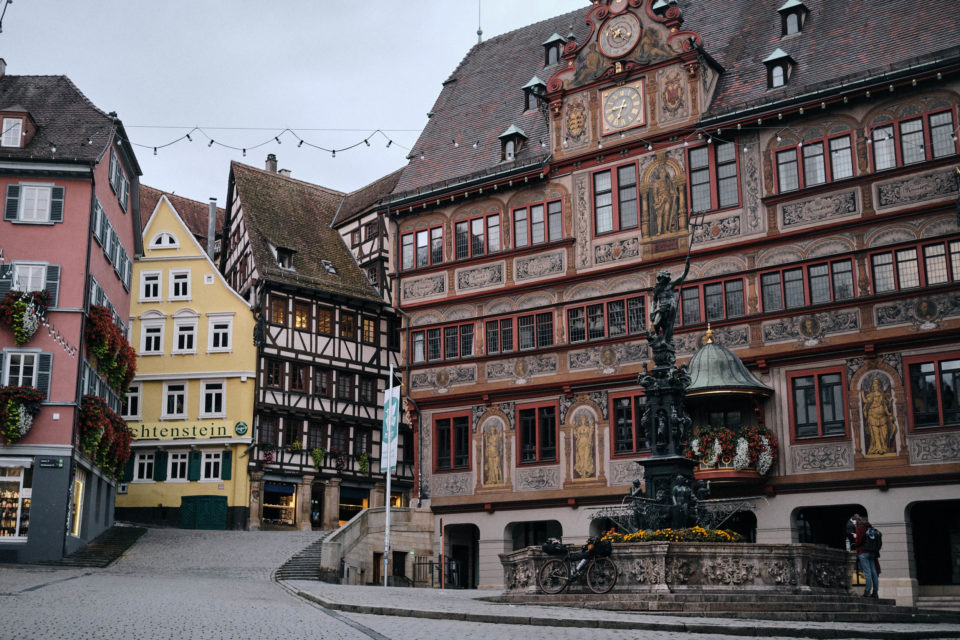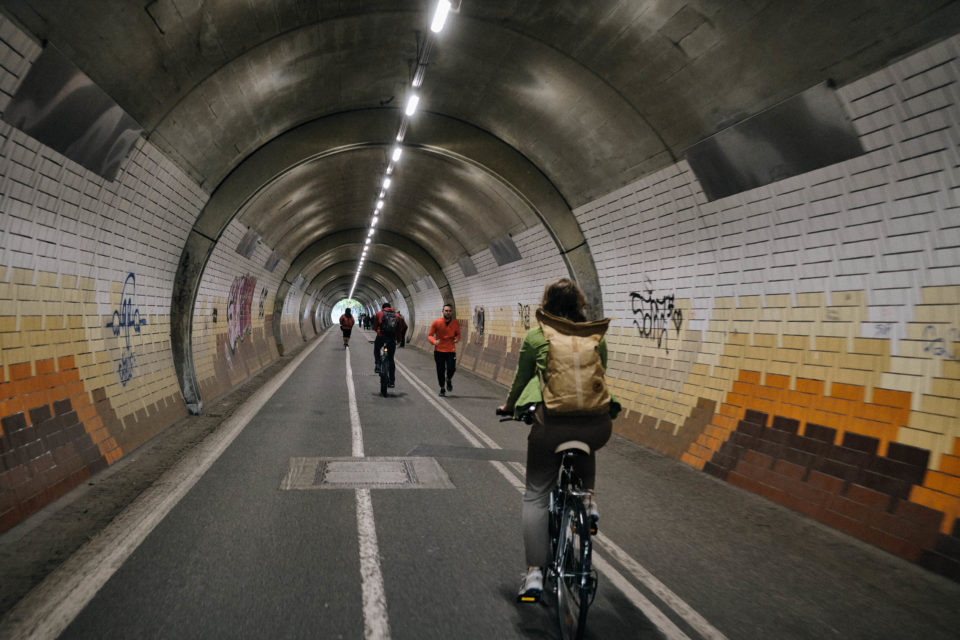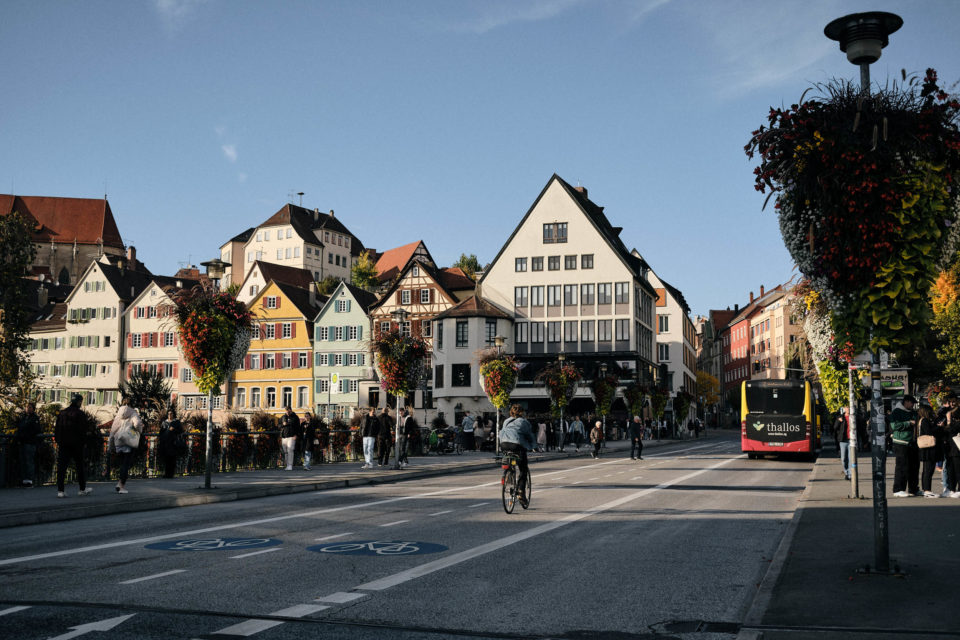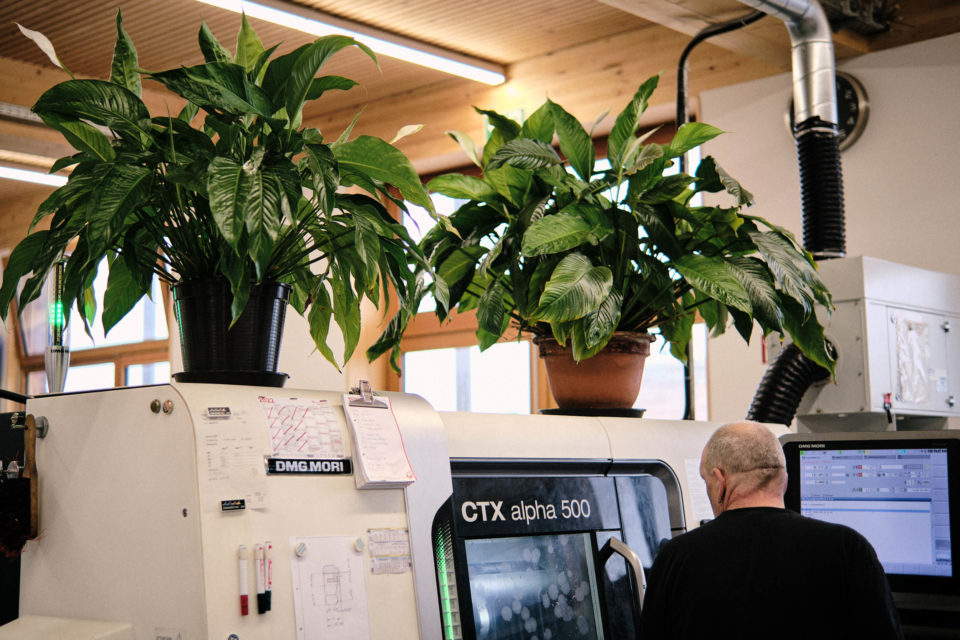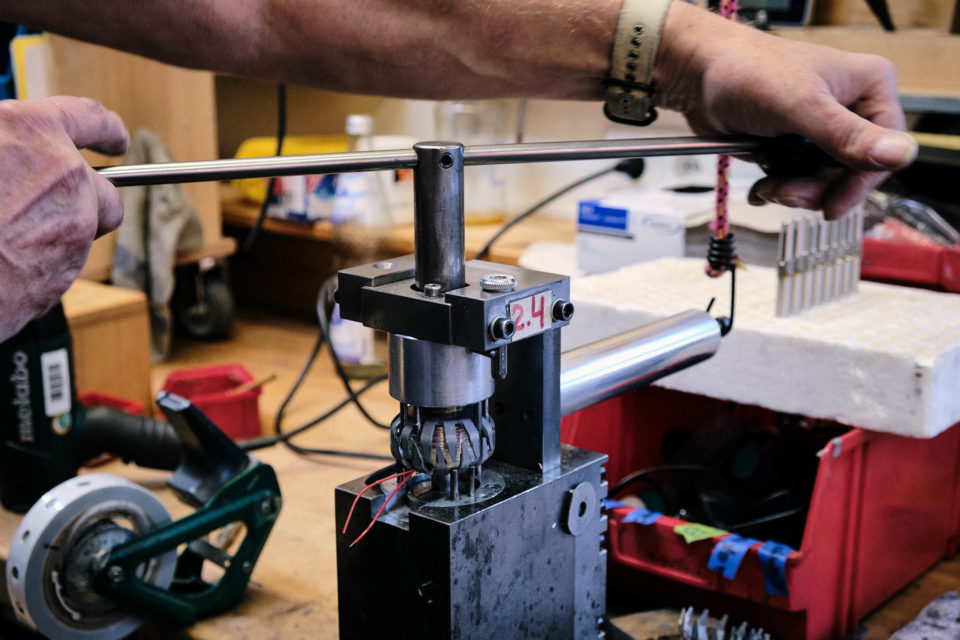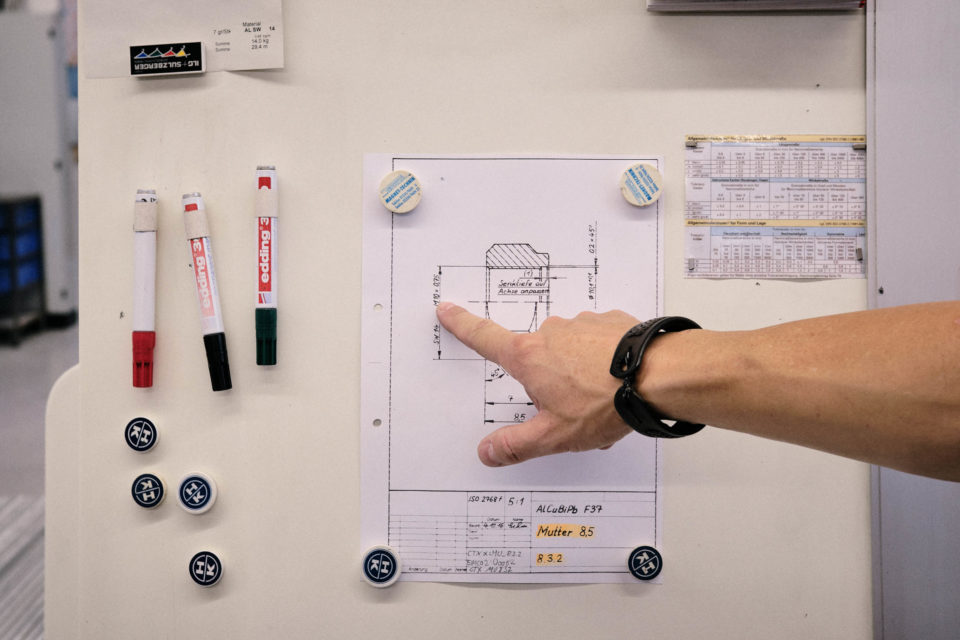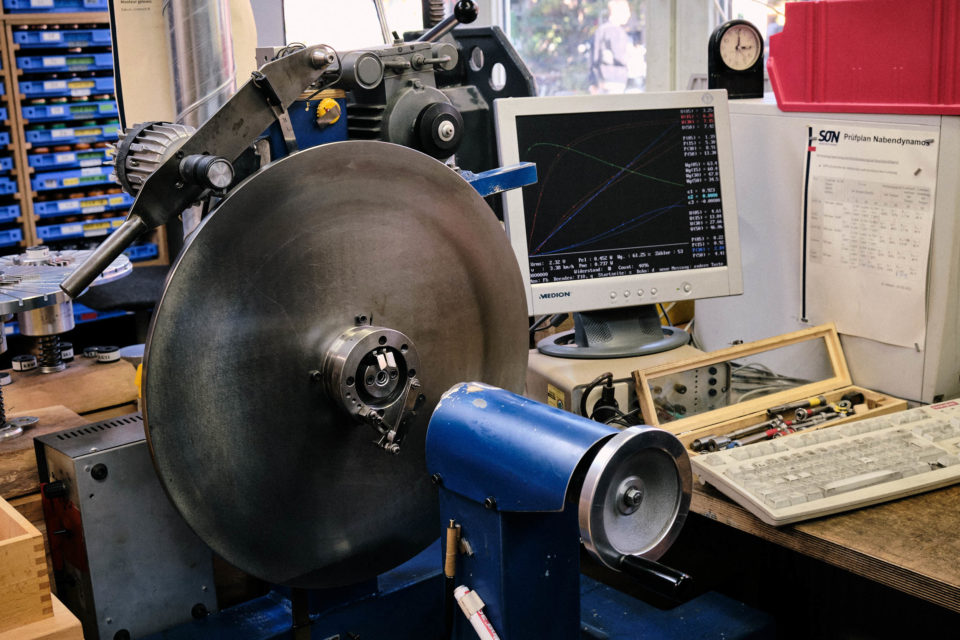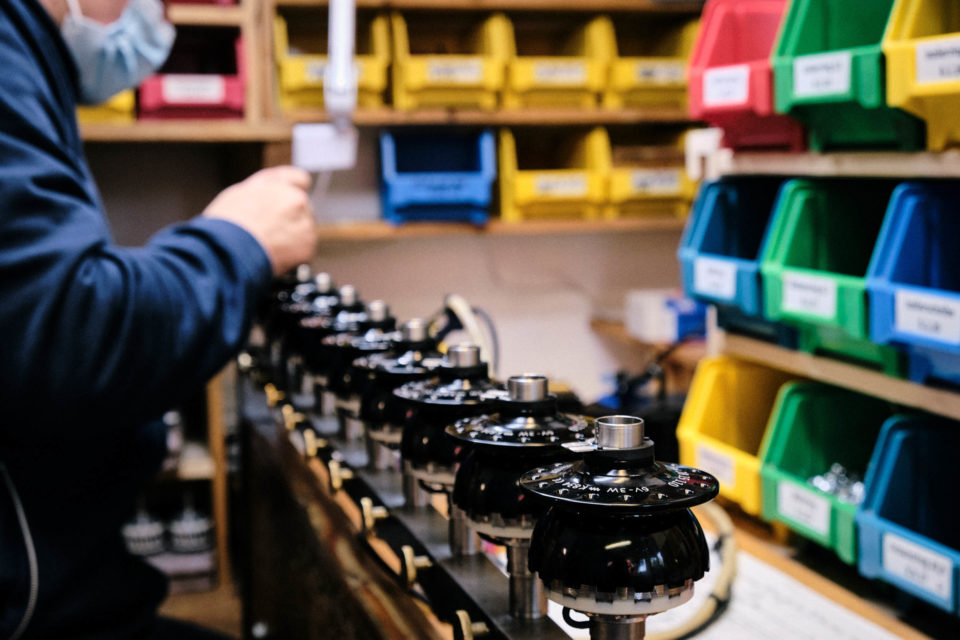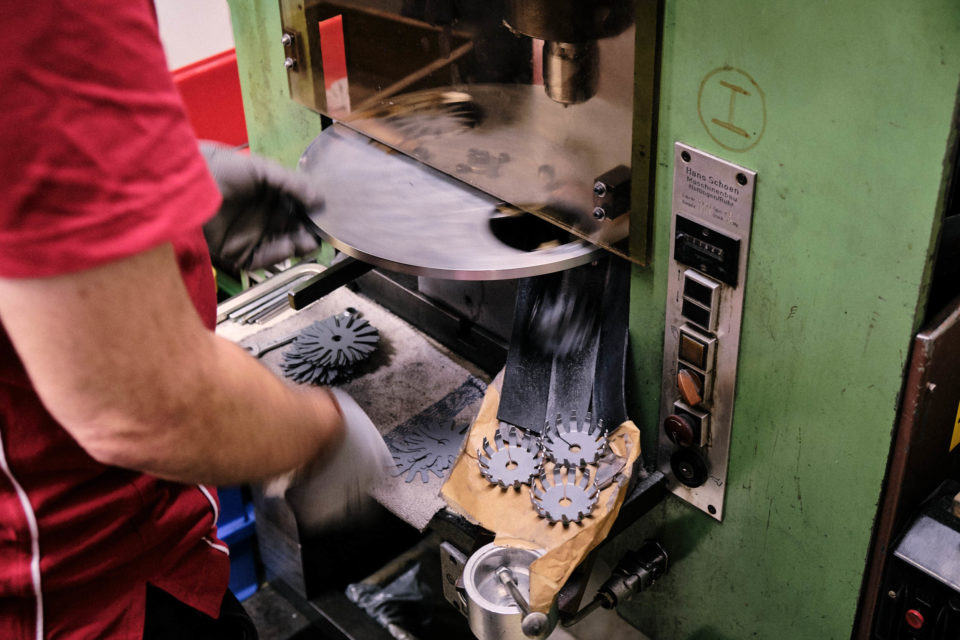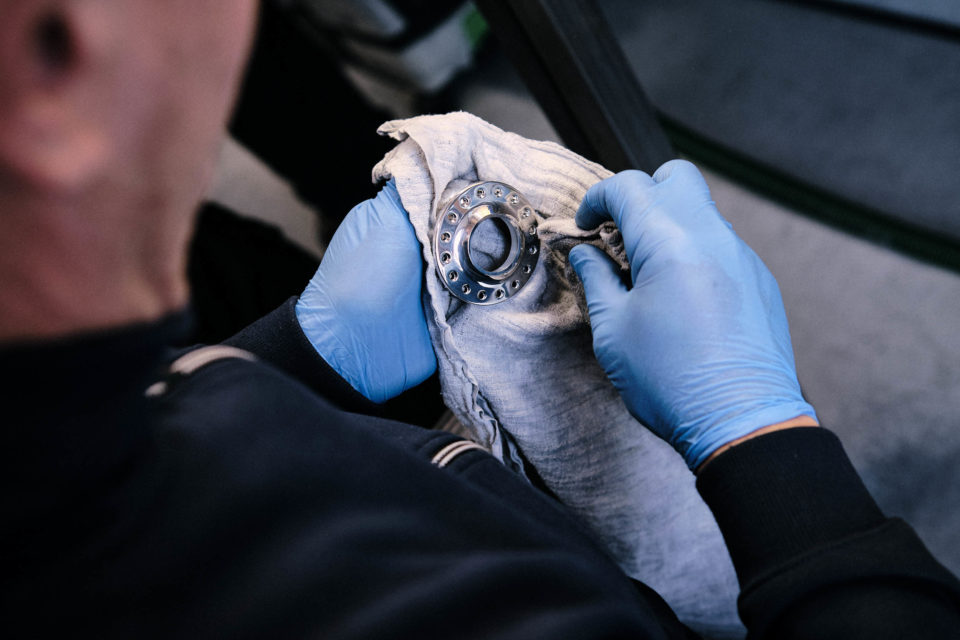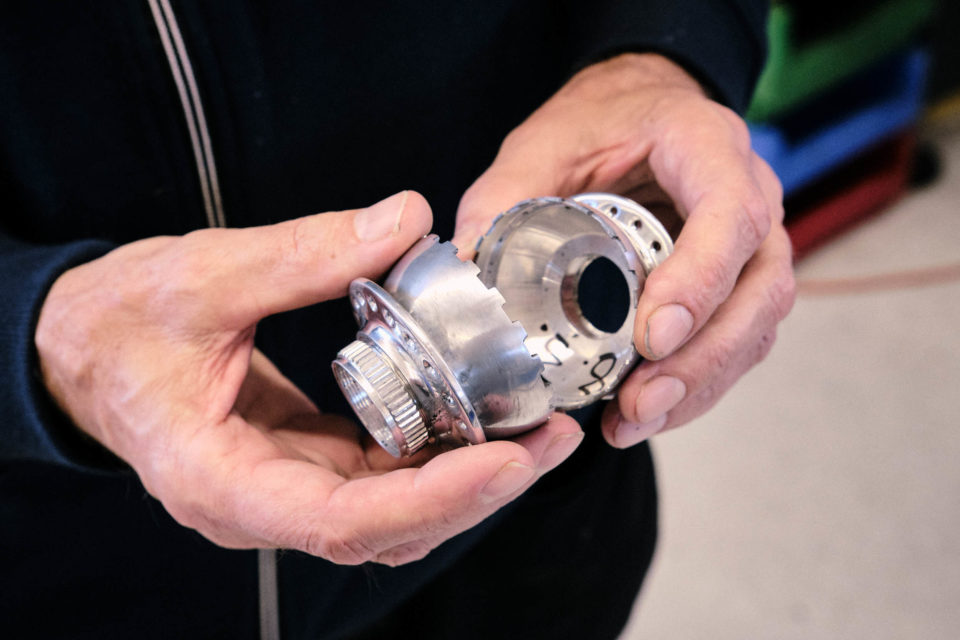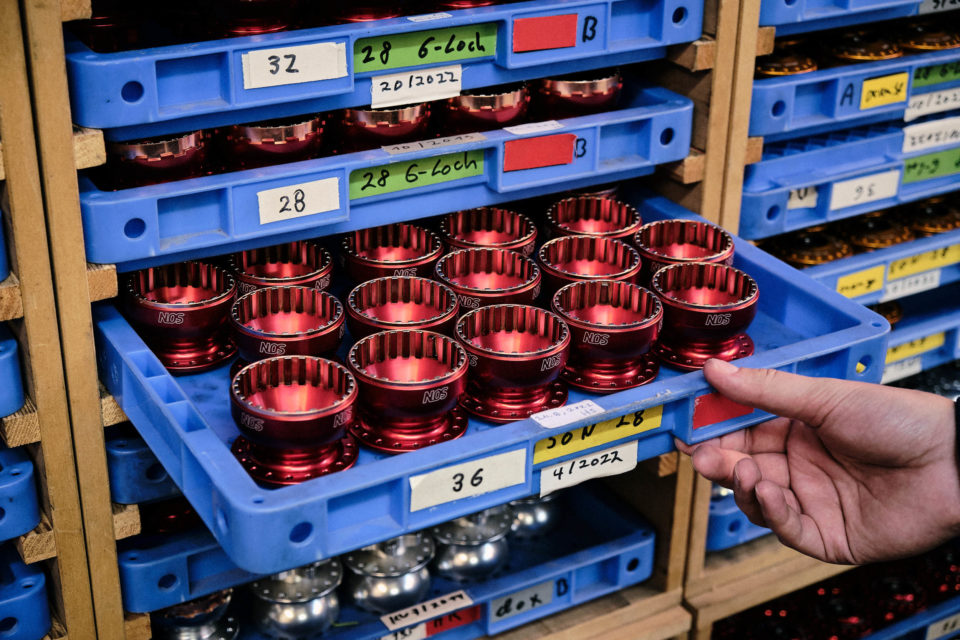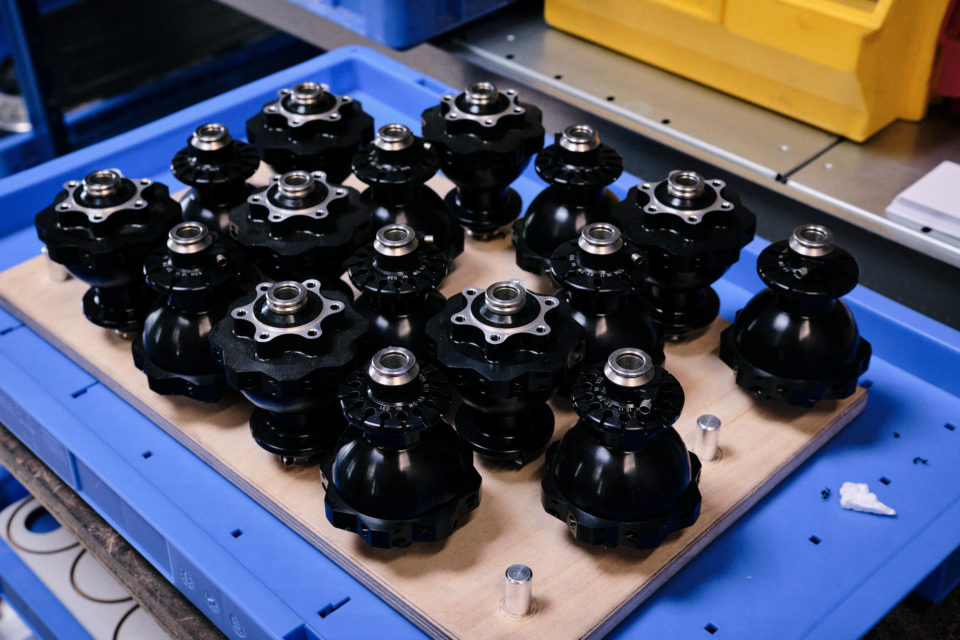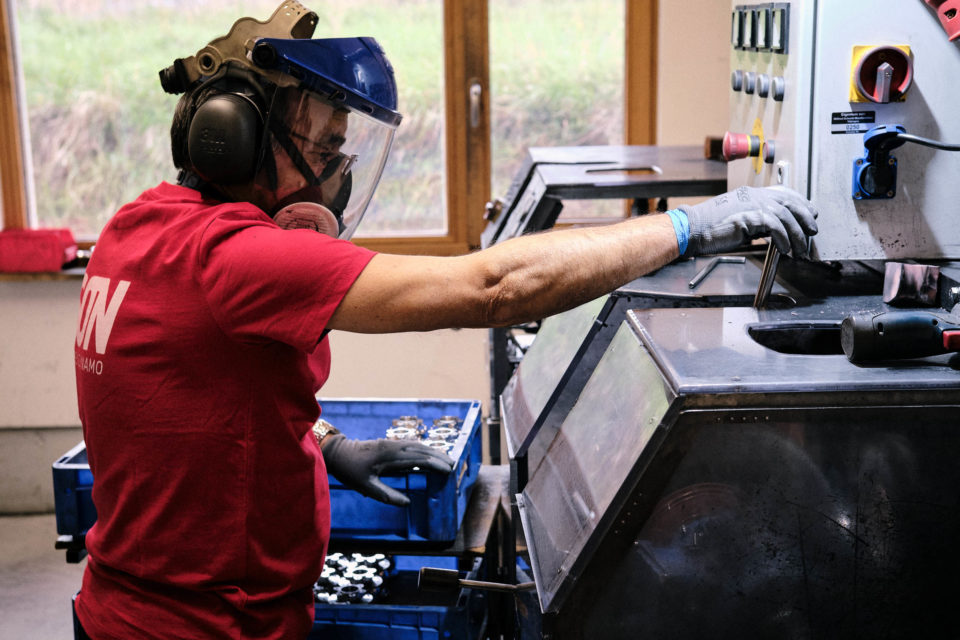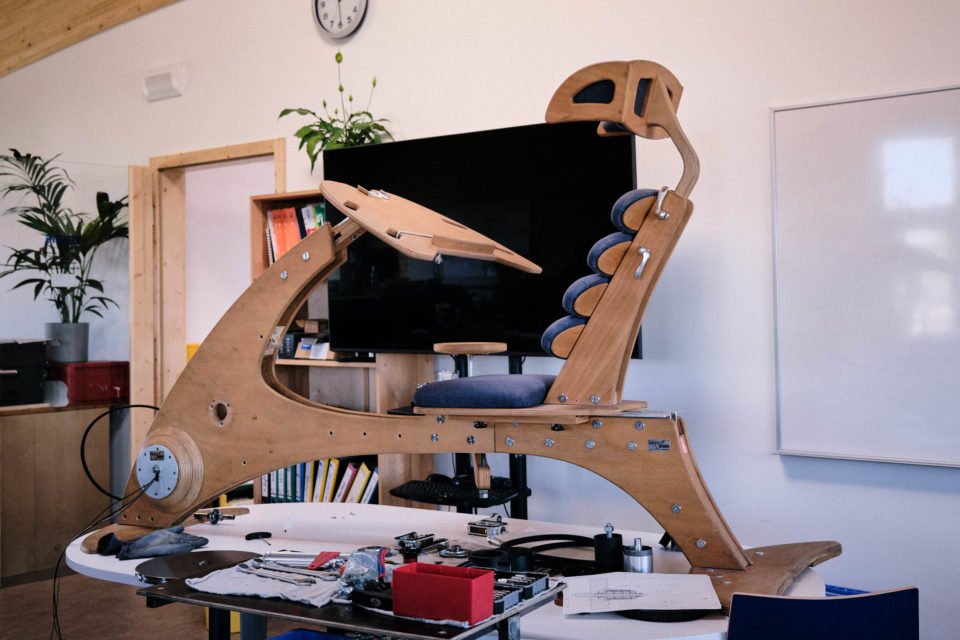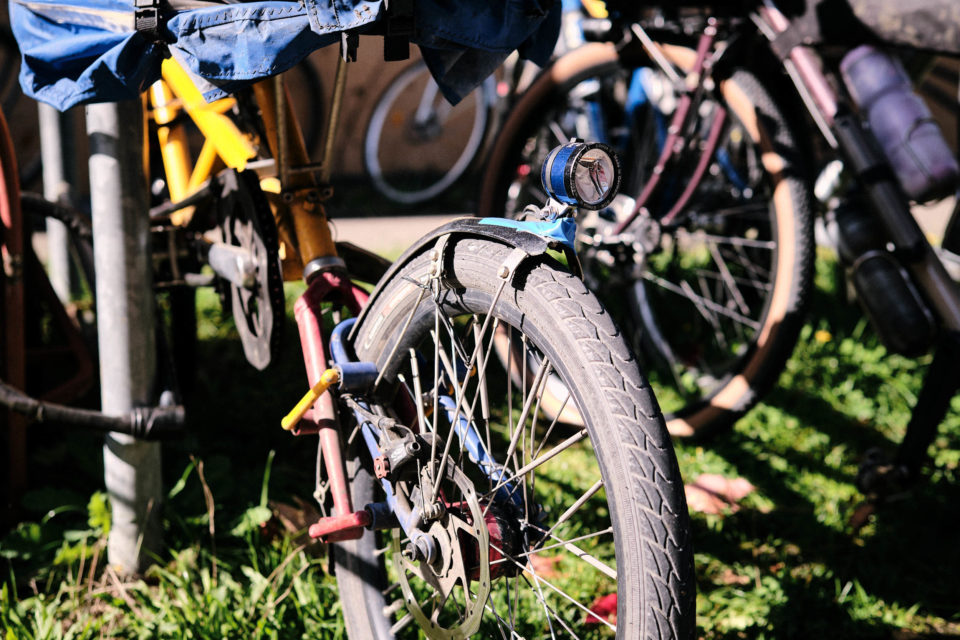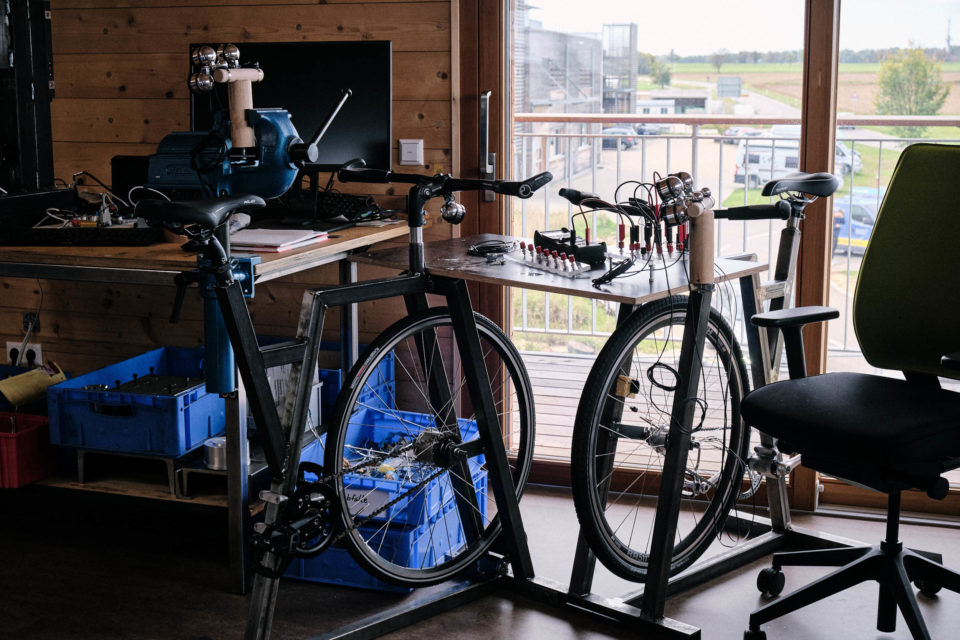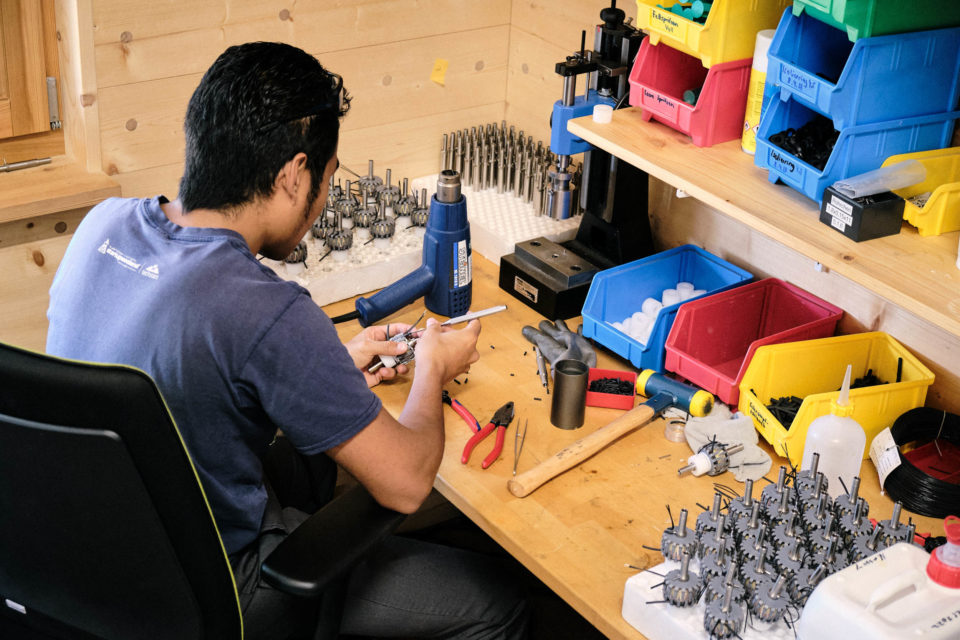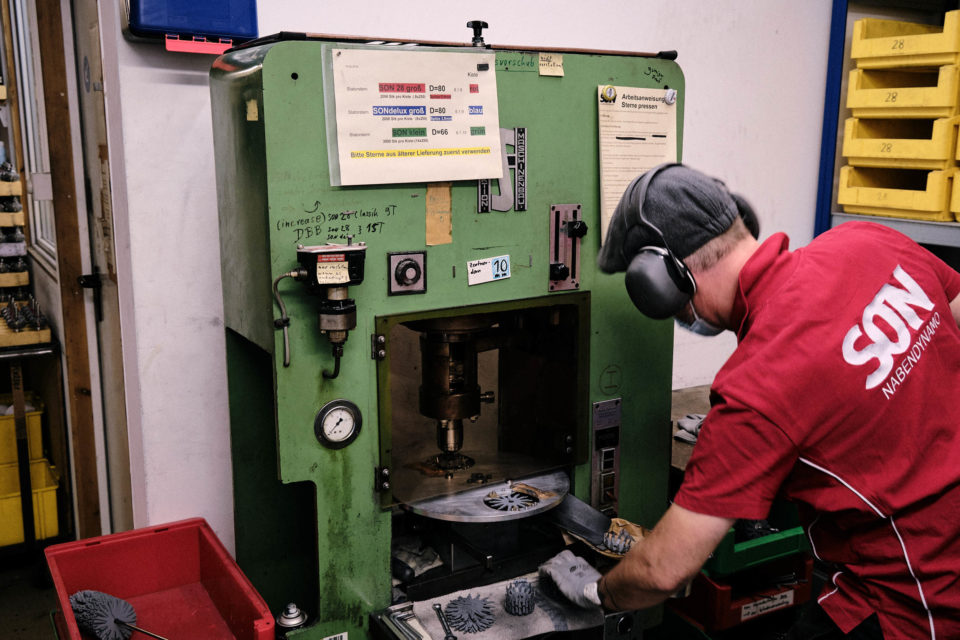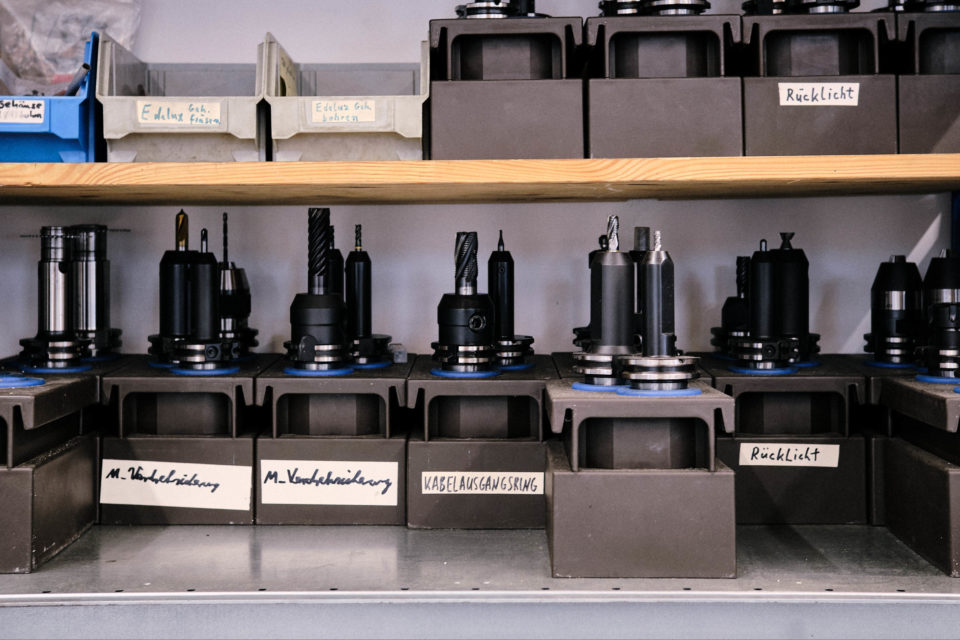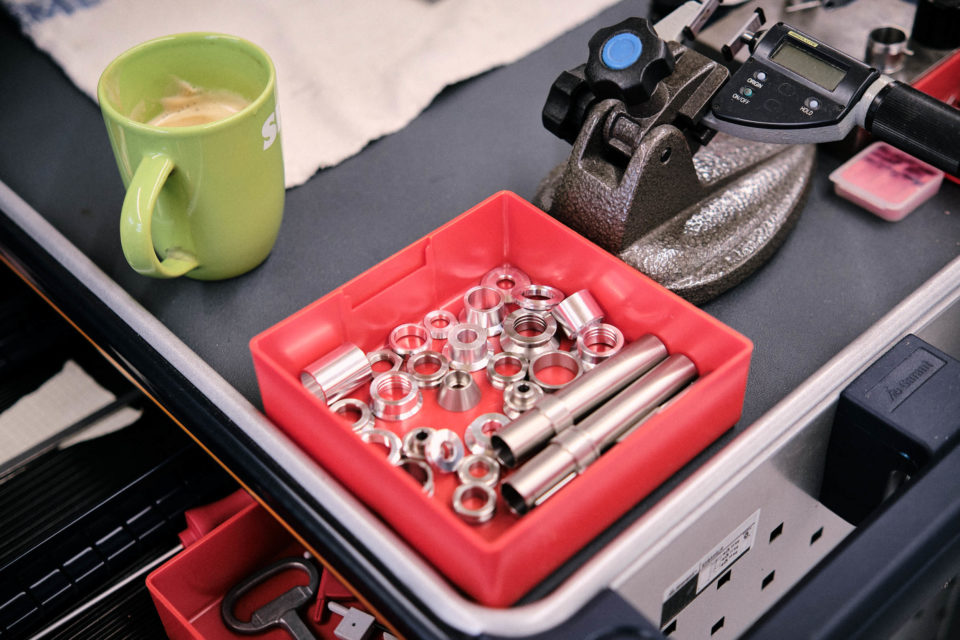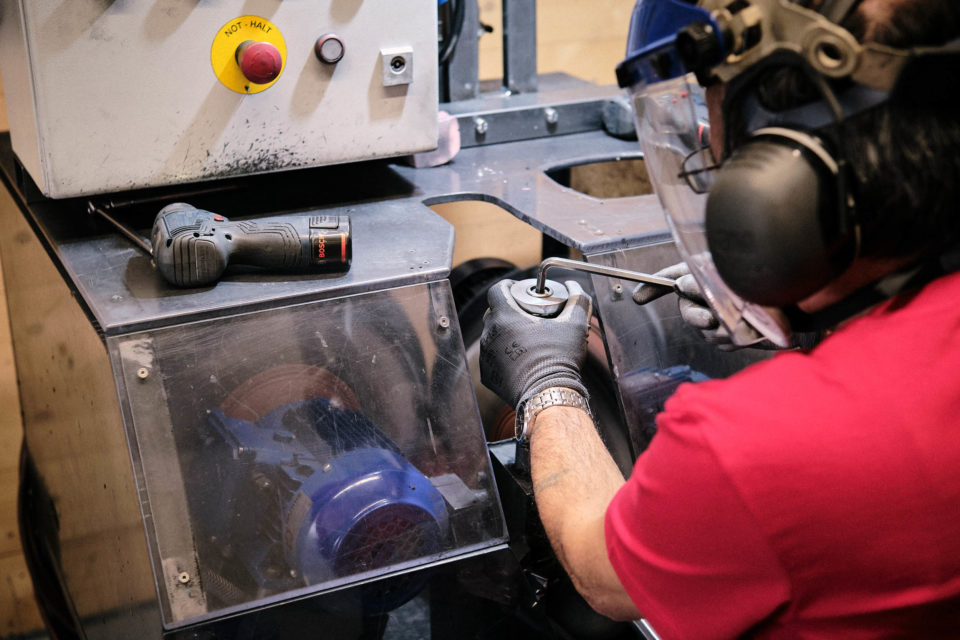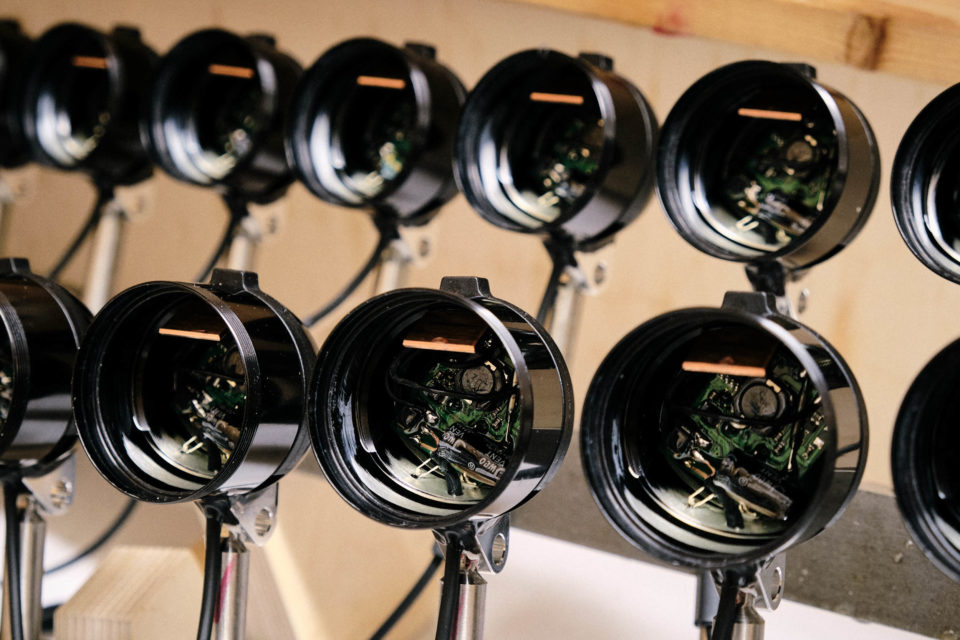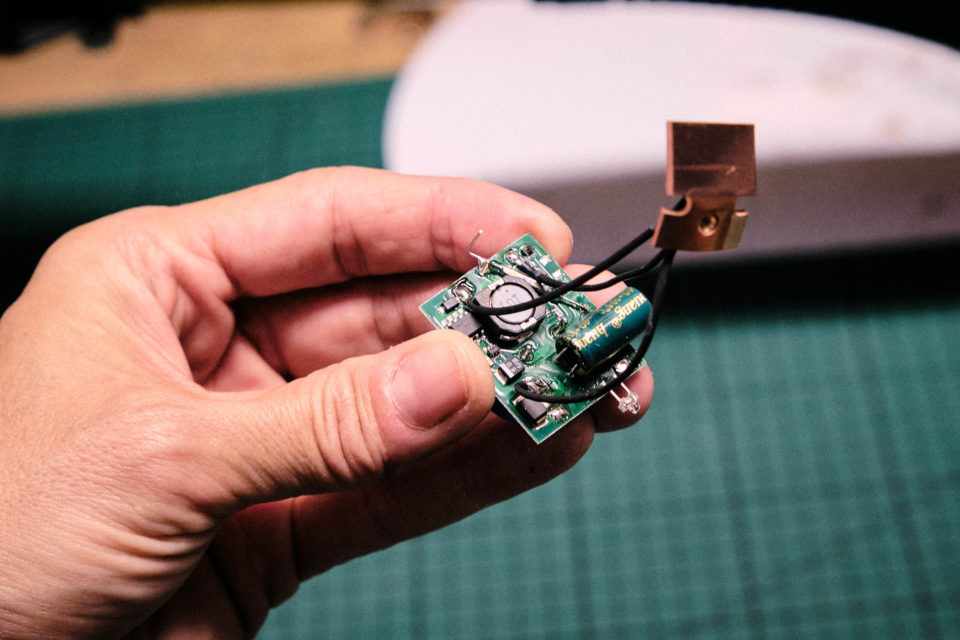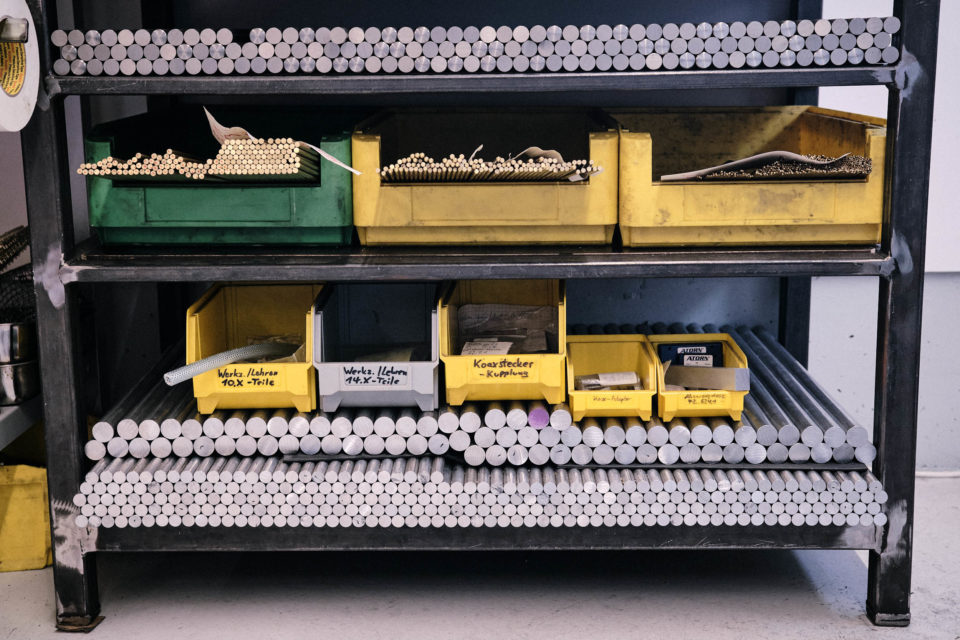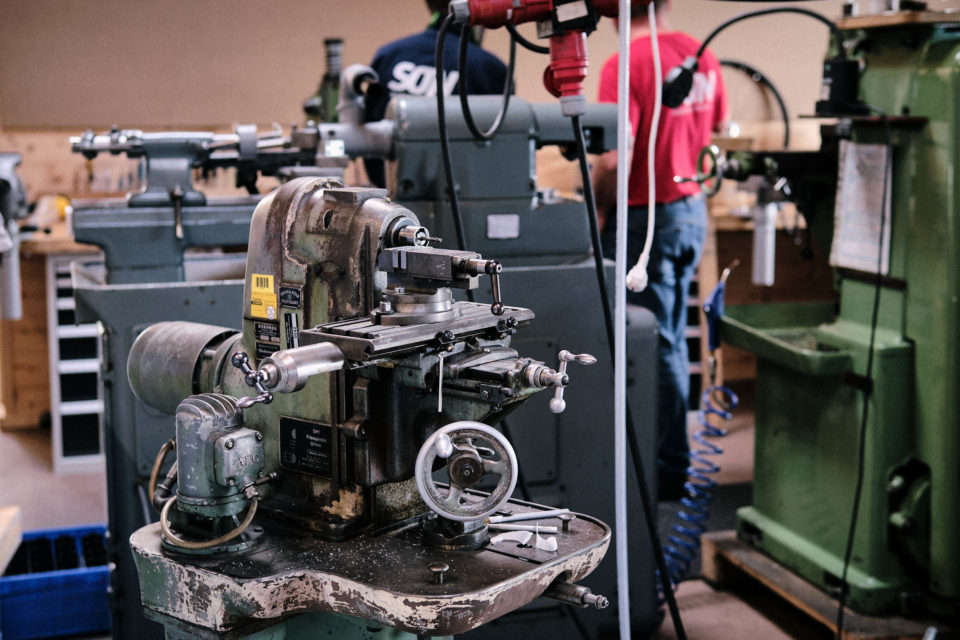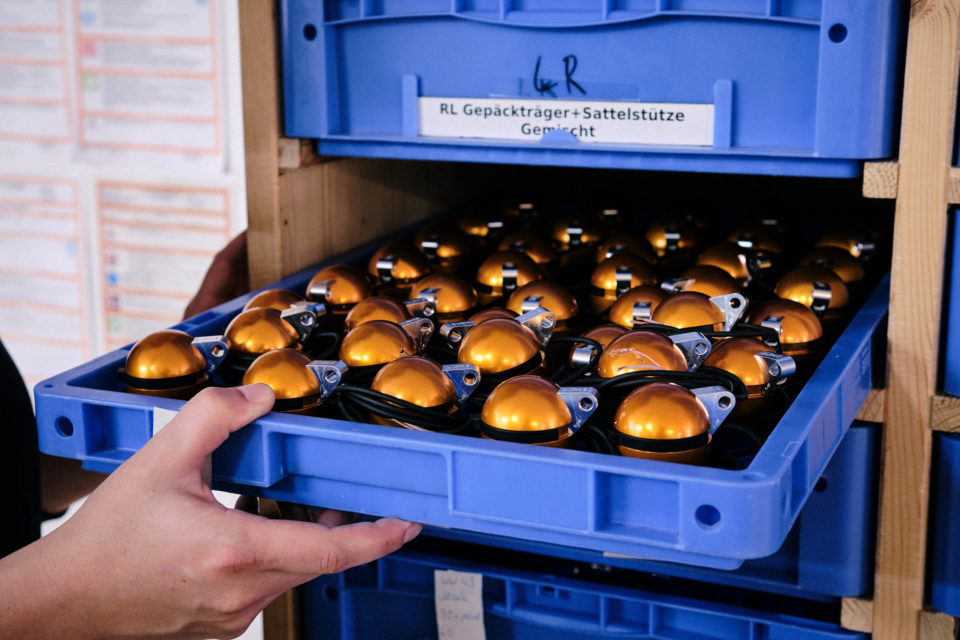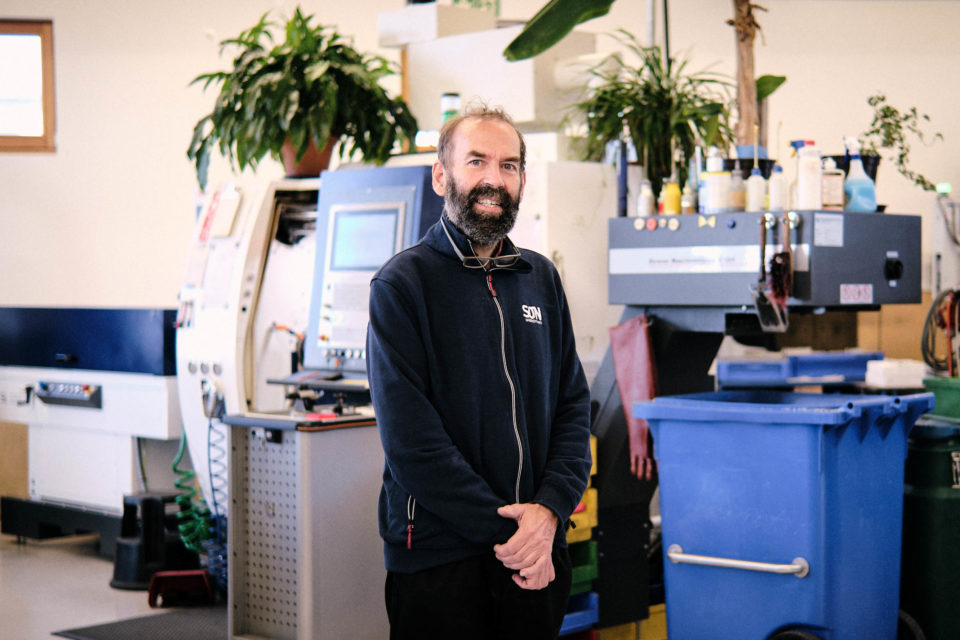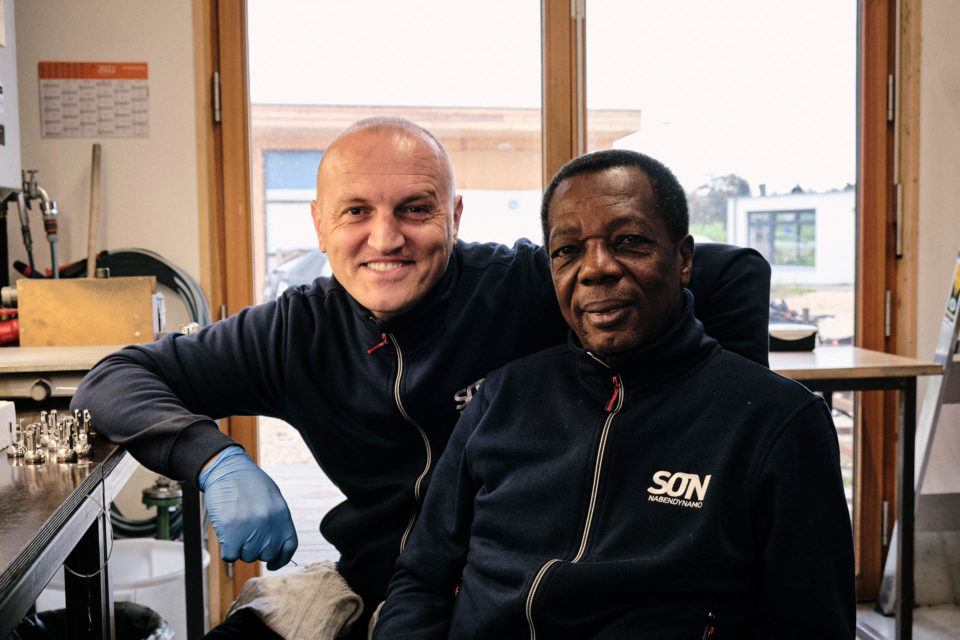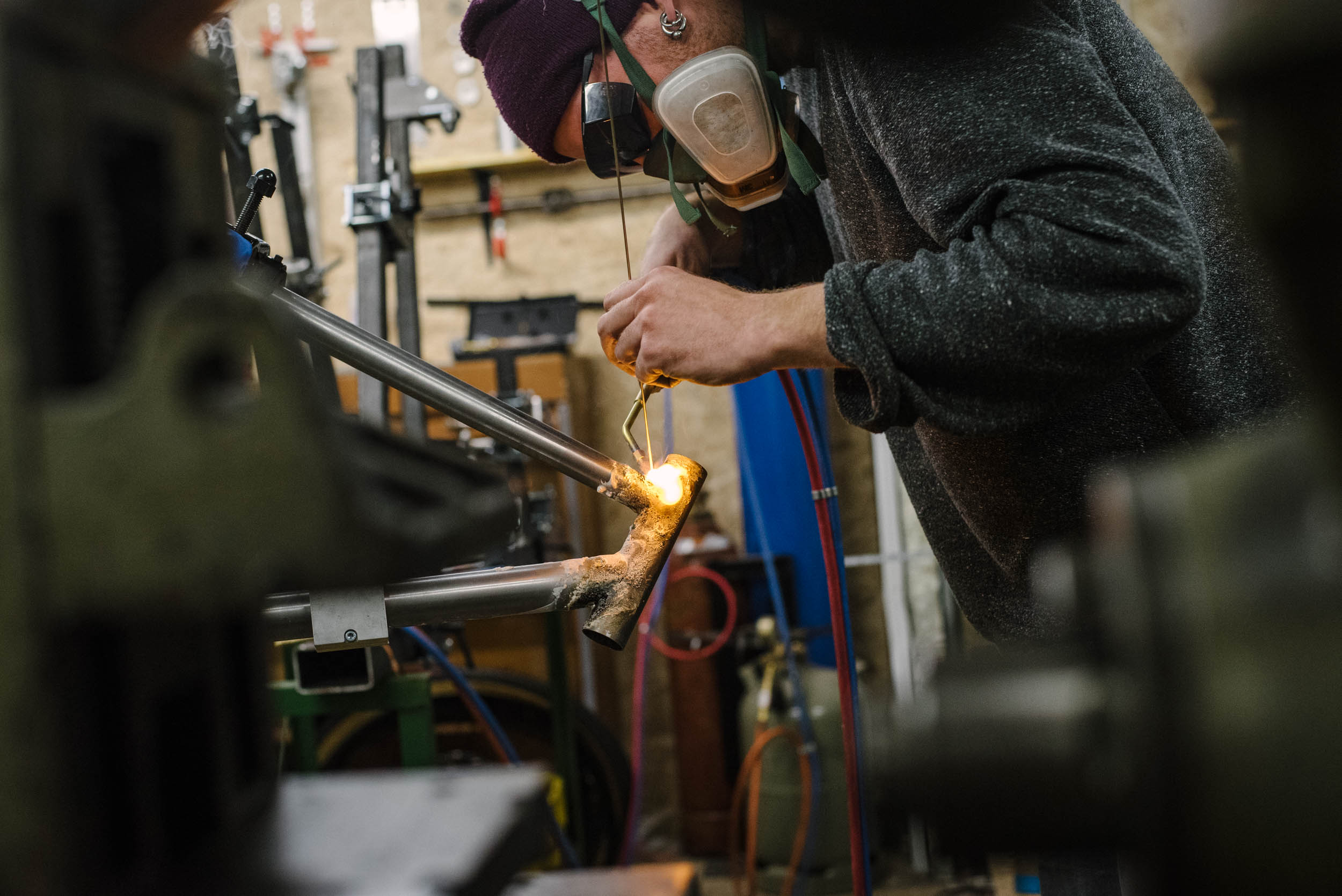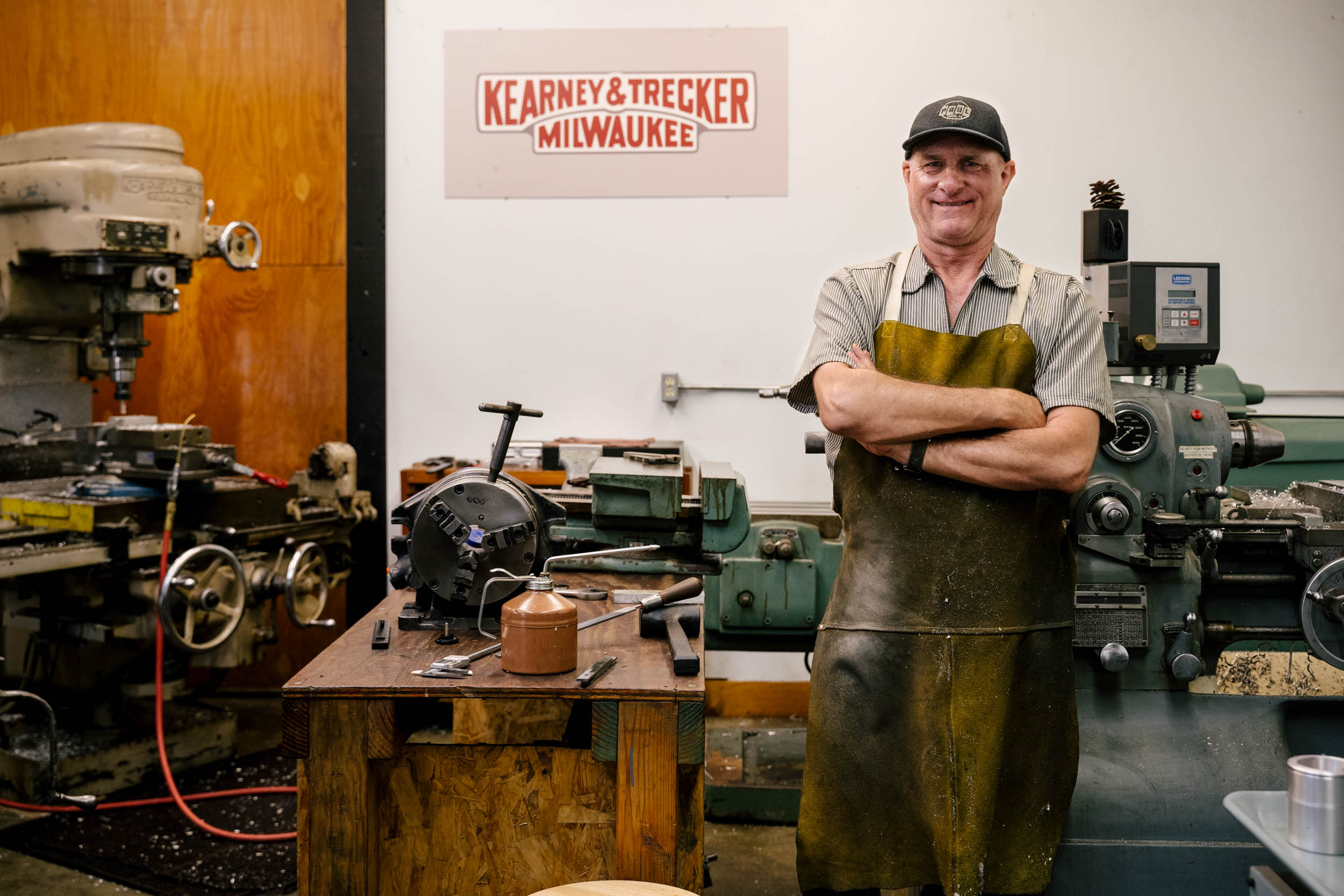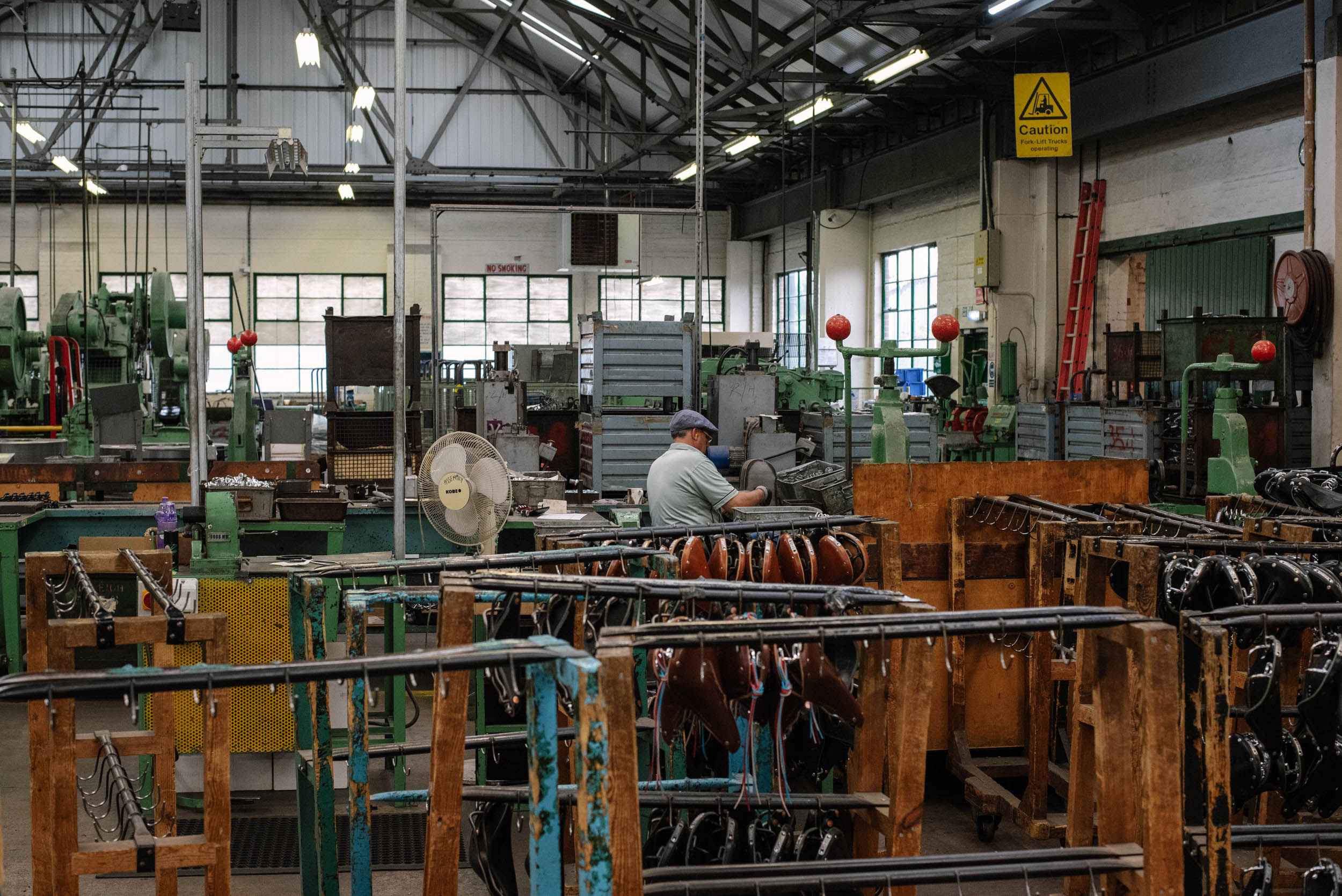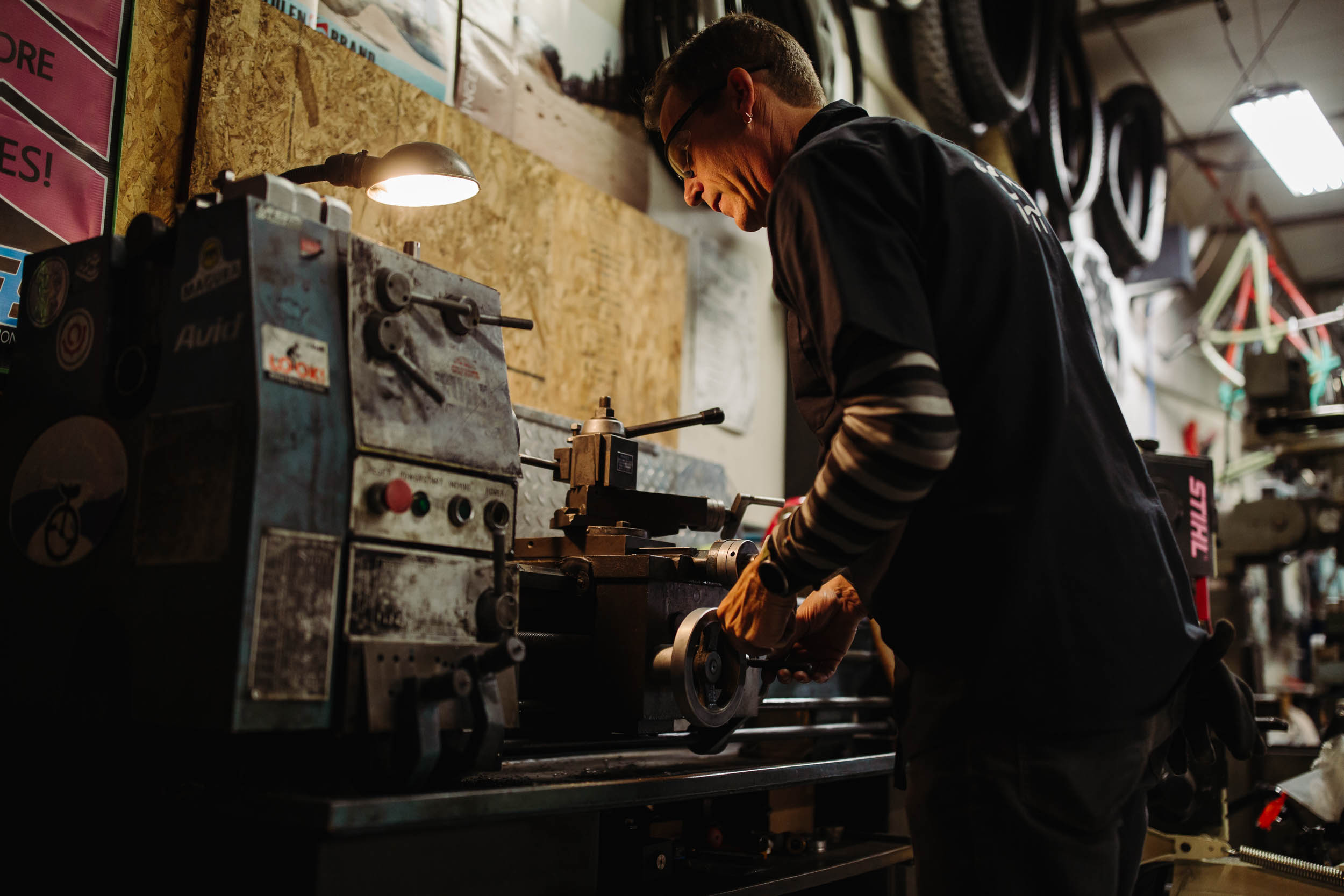Inside SON: Schmidt’s Original Dynamo Hubs from Germany
Share This
Few things are as transformational to a bicycle’s character as always-on, dynamo-powered lighting. Josh Meissner recently rode down to visit the engineers at Schmidt Maschinenbau in Tübingen, Germany, who created the legendary SON dynamo hub that kickstarted the bike lighting revolution. Find a deep dive into the past, present, and future of the small company and learn what makes SON hubs a cut above the rest here…
The unassuming dynamo hub has attracted a cult following among my Berlin cycling circle. Since bikes are part of our everyday life, year-round, rain or shine, lights that are always on, don’t need charging, and can’t be forgotten are essential. They transform a bicycle from a recreational toy into a reliable companion that’s always ready to go, whether that’s for a quick pizza run, a long all-terrain ride, or an impromptu overnighter. And, one by one, as our lesser hubs eventually give up the ghost, we’re all converting to original SON dynamo hubs. Yet, despite their products’ legendary halo, the company in southern Germany seemed like a black box. So, when the opportunity arose, I naturally jumped at the chance to ride down there and shine some light on their inner workings.

Into the Heartland
It’s early October, and over the course of the short but unusually warm day, I’ve dropped down from the conifer-lined gravel doubletrack in the Schwarzwald mountains onto the mellow cycling paths in Neckar River Valley. The waymarked route guides me into the heart of Swabia, the industrial heartland of Germany, and the hills slowly attenuate while the villages turn into small cities. Up ahead, an unending stream of lights seems to emerge from the side of the hill. It’s a bike tunnel connecting the north and south of town, and commuters are streaming out of it on their way home. What many of them won’t know is that the modern generator hub powering the lights on their bikes was pioneered by the engineers at Wilfried Schmidt Maschinenbau GmbH, right here in the model cycling city of Tübingen.
Back in the 1980s, engineer-owner-operator Wilfried Schmidt identified a gap between the bicycle’s potential as a sustainable mode of transport and the unreliable, noisy, and inefficient sidewall dynamos and dim incandescent bulbs of the time. During his mechanical engineering studies, before CAD and affordable CNC machining, he dove deep into the existing designs and patents on generator hubs.
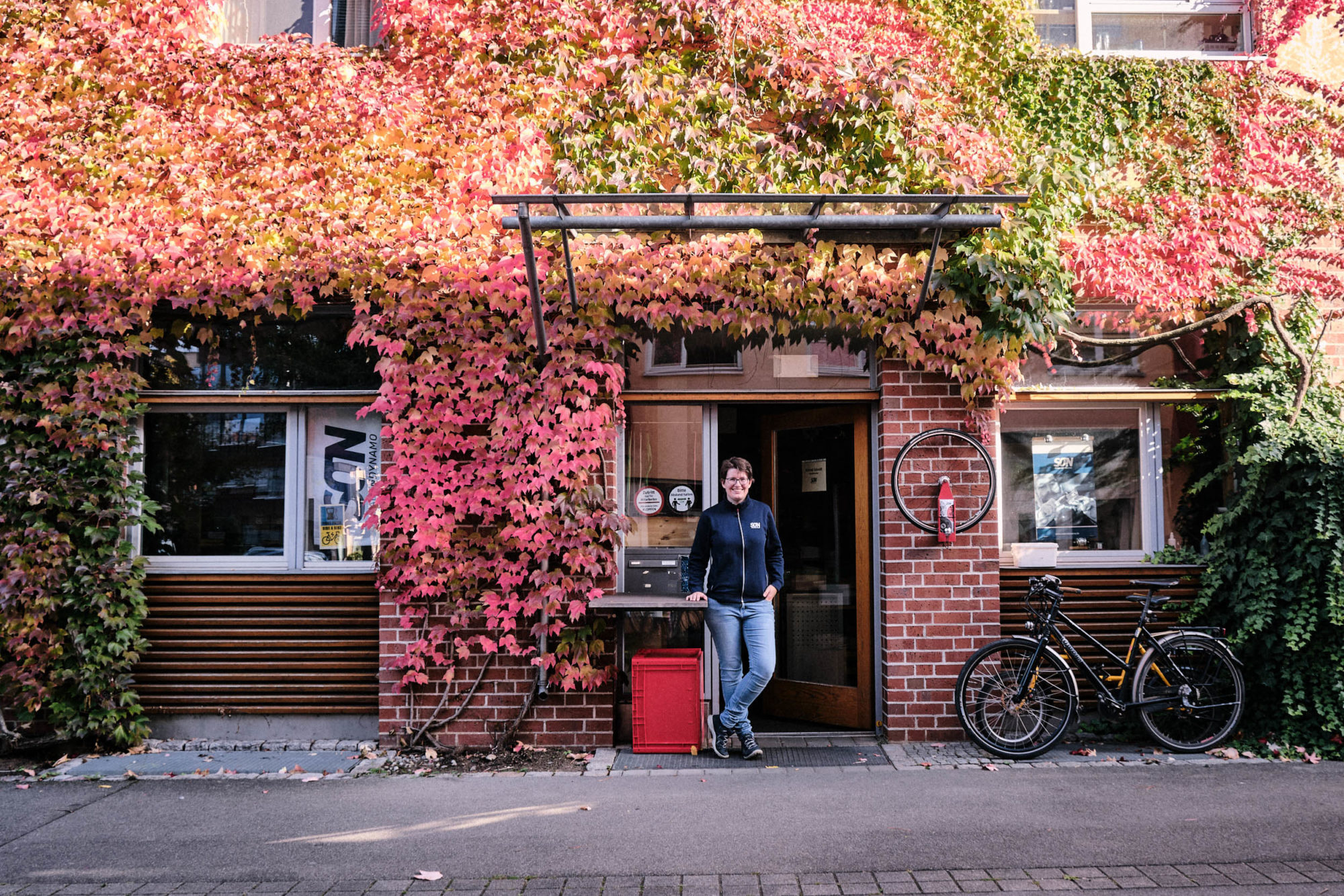
At the end of a long development journey, he came out holding his original hub dynamo, which shaved half the weight and generated twice the power over the old Sturmey-Archer design it was inspired by, effectively quadrupling the performance in one fell swoop. After a few false starts with licensing the design to other companies, Wilfried Schmidt, who’d already been producing niche machinery with his eponymous engineering company, decided to take matters into his own hands and bring the Schmidt Original Nabendynamo (SON) to riders.
Then and now
First released in 1995, the high-performance SON dynamo was revolutionary for randonneurs, tourers, and dedicated bike commuters alike. But a great product on its own is never enough to sustain a business. In the early years, they had a hard time justifying to potential customers their much higher price compared to cheap bottle dynamos. The mass market didn’t want to pay the necessary cost for longevity and reliability, yet the Swabian engineers stuck to what they knew: quality above all else. Build it, and they will come.
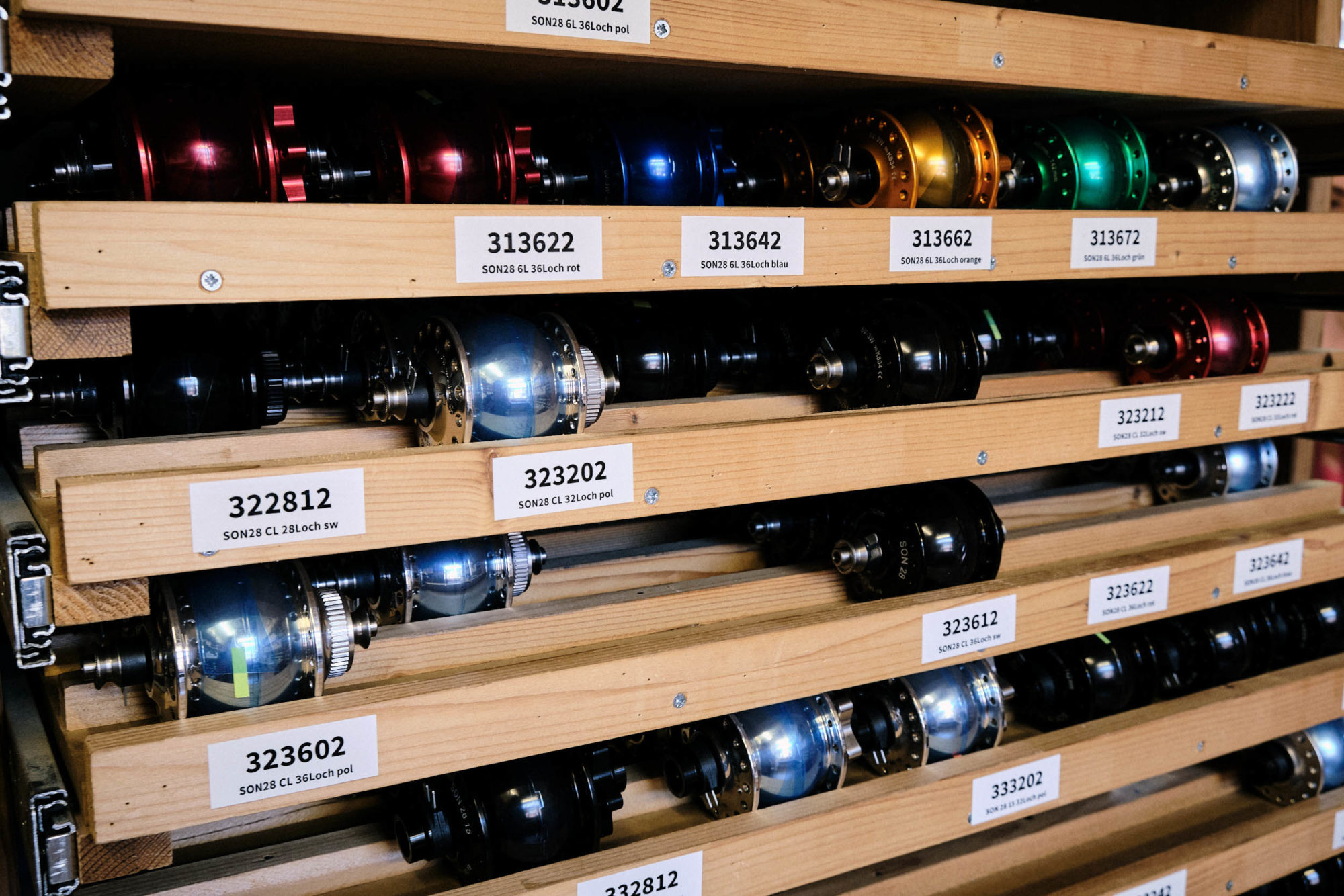
And indeed, Schmidt’s position was validated when big Shimano followed the tiny company’s lead and rolled out their first mass-market hub dynamo in the year 2000, instantly expanding the market with their global manufacturing and distribution might. Since then, Schmidt Maschinenbau from Tübingen has built a glowing reputation for their dynamo lighting systems that are unparalleled in quality and reliability. They’ve grown into a quintessential Mittelstand business that provides stable employment for around 50 people, some of whom have been along for the ride since the beginning.
Multiple assembly spaces are scattered across a couple of streets on the outskirts of Tübingen—stretch marks of organic growth. Their home in the French Quarter is a mixed-use zone, where they’re neighbored by small businesses, cafés and restaurants, and apartments. Wilfried himself was involved in the planning of the building that would house the company’s first manufacturing space on the ground floor and his family above. It’s only after nearly 30 years in operation that they’re moving into a nearby industrial area, where they plan to finally bring their entire production under one roof by the end of 2023. The machining department is already set up there, and that’s where I begin my journey, just like the metal billets that will go on to become hub shells and axles.
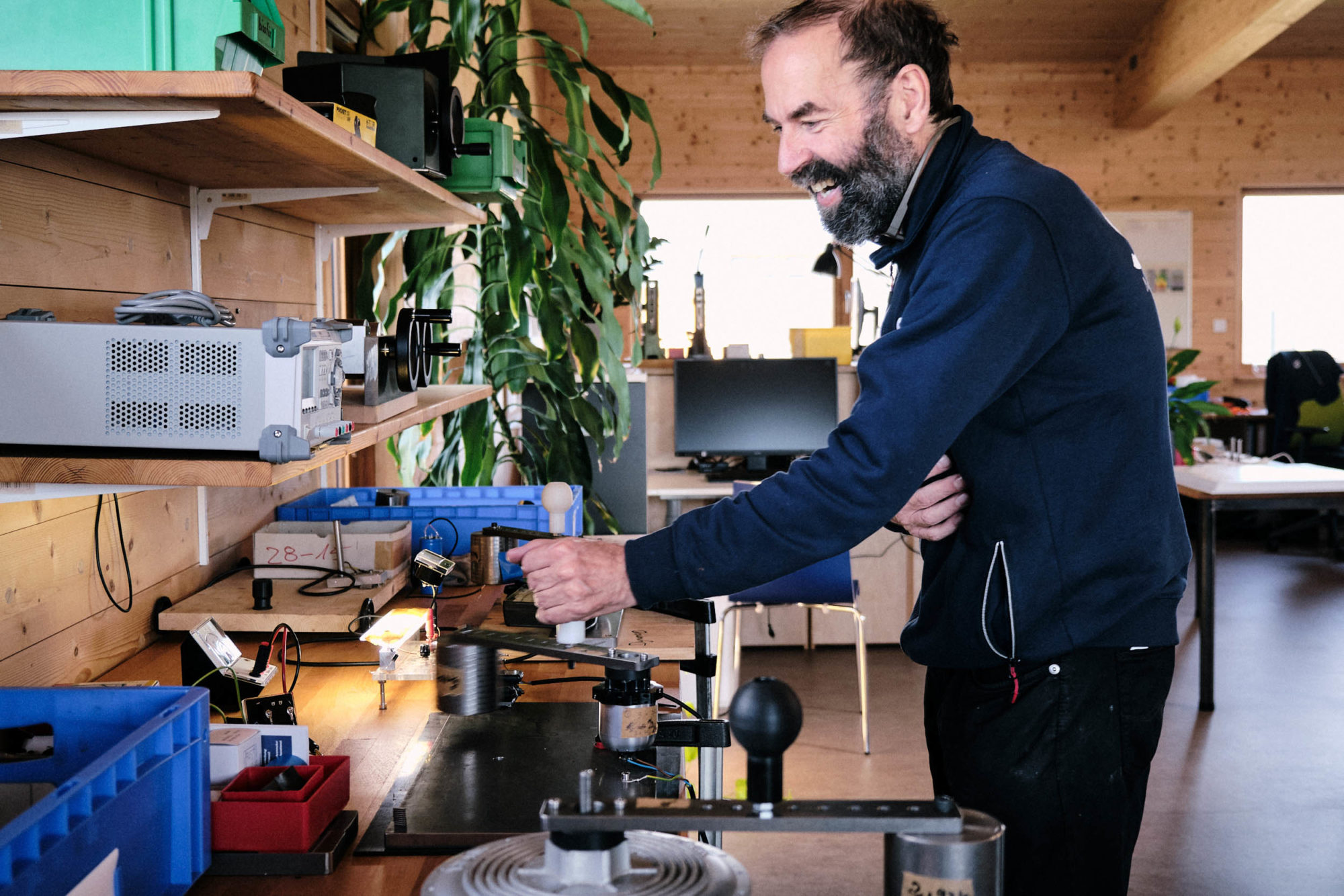
The bright new wood-paneled facility stands out among the grey of their commercial neighbors. It’s early on Monday morning when Wilfried Schmidt—casually clad in jeans and a SON company zip jacket—shakes my hand at the door. I’m starstruck, but he’s nonchalant. He’s got a few rounds to do with the engineers before he can get to me, but I’m encouraged to poke around in the meantime. “Don’t worry, we have nothing to hide. Have a good look around,” he tells me.
Their new space is exceptionally clean but not at all sterile. There are fancy autoloading CNC machines that run unattended overnight and old manual ones bought second-hand that turned the very first hub shells. Big windows let in lots of light for examining polished surfaces, and their jungle of large-leafed tropical plants flourishes. I’m in Wilfried Wonka’s engineering wonderland, wandering from station to station, and the machinists are eager to explain their custom setups and tool paths.
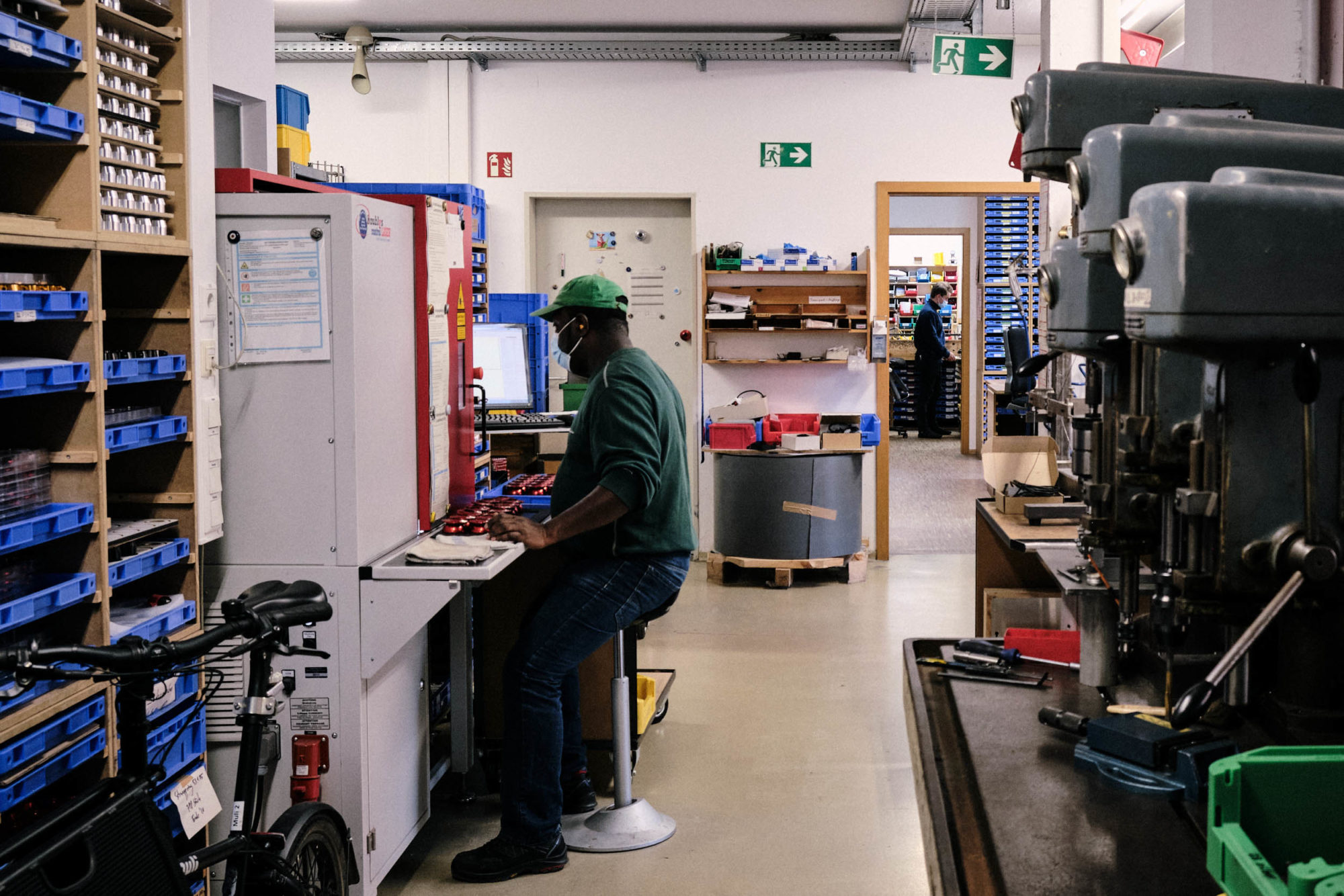
Their bread and butter hubs are the all-rounder SON 28 and the lighter SONdelux, which are available in all combinations of axle and disc standards. From these two designs derive a staggering array of more niche models for fat bikes, trikes, and folding bikes. The axles, fasteners, caps, and connectors that go into the sleek shells are all custom designs machined almost entirely in-house from aluminum and stainless steel. Even after decades of refinement, they’re still improving their production processes every day. Recently, they’ve shifted the bulk of the shell machining to a trusted local supplier, though they retain the manufacturing capability for doing smaller production runs.
Engineering talk
Pulling apart the metal shell of a SON dynamo reveals a precise layout of simple analog components. Very little has changed in the electromechanical design since its inception in the 1990s. There are no electronics to go bad, and for the moving parts, they rely on standard industrial bearings by SKF. When the wheel turns, the powerful neodymium magnets set in the rotating shell induce an alternating electric current into the stator claw poles fixed to the axle, and voilá, electricity for lighting and charging. Decades of engineering work went into perfecting the exact configuration that transforms the inert components into a useful and reliable power-generating device.
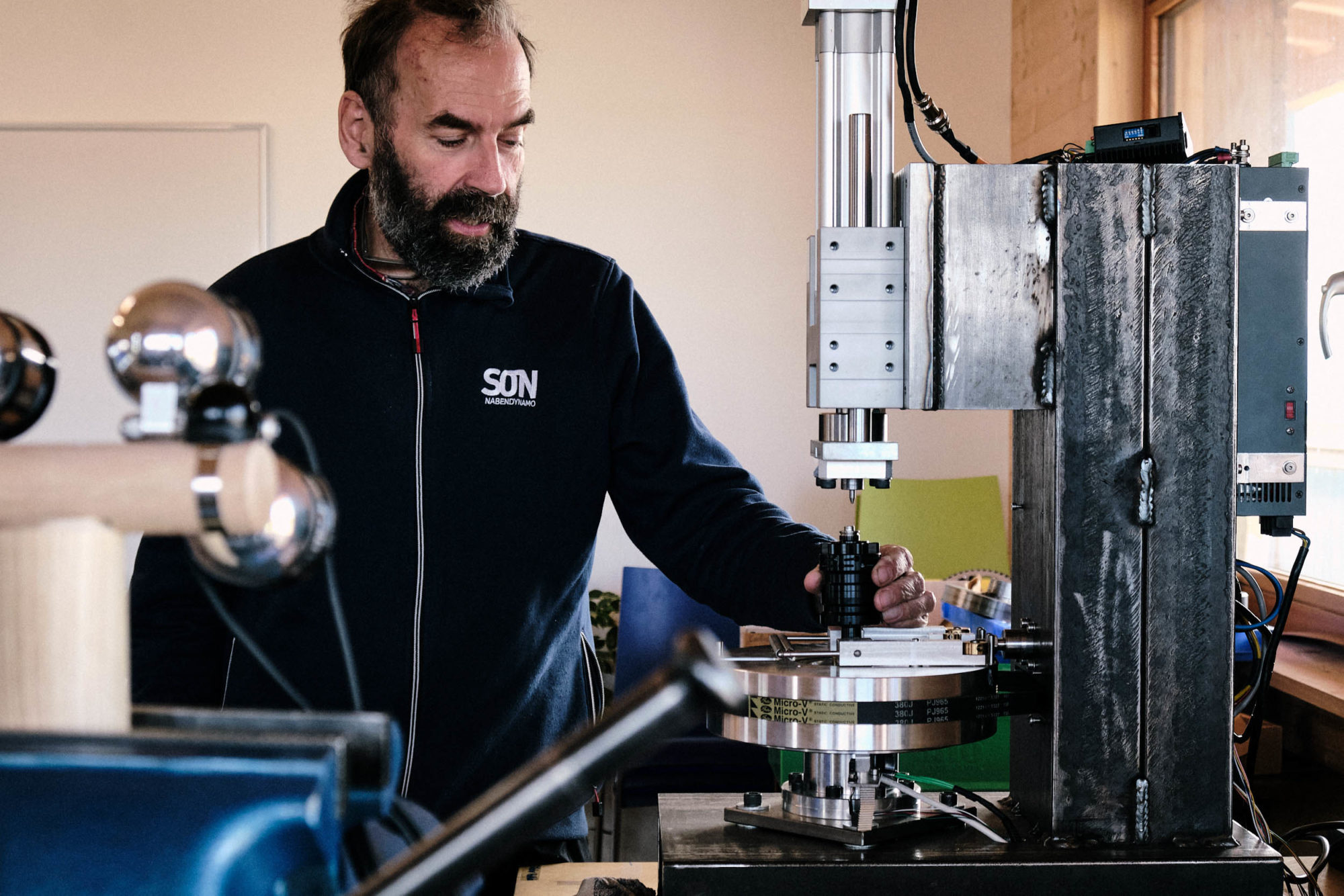
Nowadays, most hub dynamos on the market make use of the same materials and principles introduced by the Schmidt design and accordingly work quite well, but the original runs circles around lesser alternatives in terms of longevity and durability. Over the decades, fanatical world tourers and power commuters have piled up a mountain of anecdotal evidence that suggests you’re likely to burn through multiple mass-market hubs before a SON gives out. Look down the starting line of the Silk Road Mountain Race and other similar events, and you’ll see the vast majority trust in SON above all else.
After my last Shutter Precision dynamo hub developed the fatal axle wobble after just four years, I invested in the much pricier SON 28, trusting it would eventually pay for itself. Unlike cheaper hubs, which mostly land in the trash once the bearings are worn out because it’s deemed “uneconomical” to repair them, Schmidt Maschinenbau designs their hubs for ease of maintenance—the outstanding product and after-sale service are a package deal.
Wilfried cites three main factors that contribute to the inordinate longevity of the SON hub. First, reliable bearings by industry supplier SKF sit at the core of the unit in precisely machined bearing seats for the longest possible bearing life. Turning a hole to exactly the right diameter is not as simple as it sounds when working with thin-walled shells. Thermal warp from the cutting, clamping in the fixture, tool condition, material variability from batch to batch, order of operations, and any one of numerous other factors is enough to create a batch of rejects when you’re up against the practical limit of precision. Gauges and calipers, combined with decades of experience and constant scrutiny, are what ensure consistency and accuracy and therefore long life, not computer control.
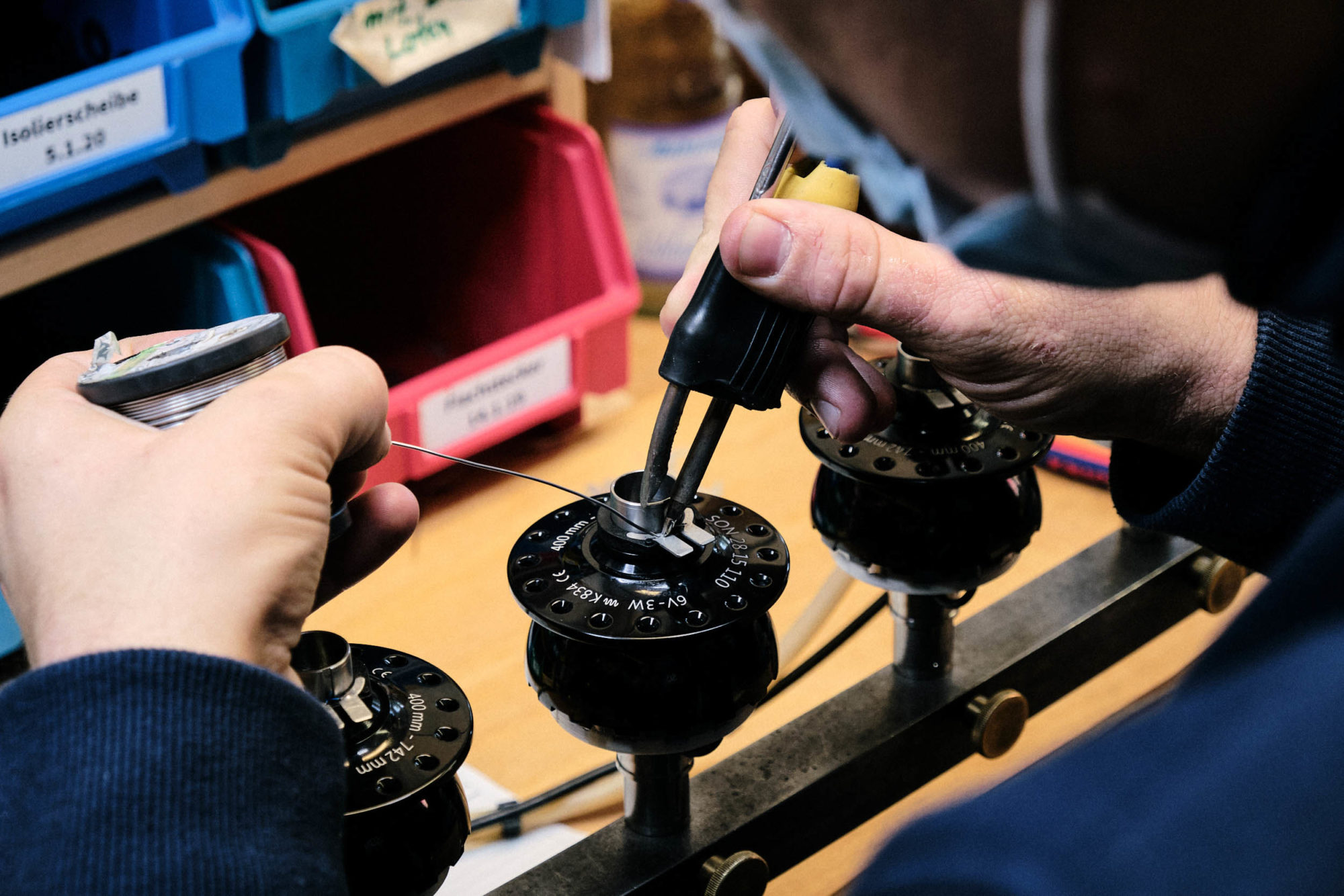
Second, nearly all of the components that make up a SON hub are made in-house, which means the engineers and machinists can go back and forth to dial in every custom part far beyond the patience of any supplier. Over the years, Wilfried and his engineers have designed and built countless special machines and fixtures for their one-of-a-kind machining steps, assembly tasks, and quality checks. The high-quality hubs and lights they produce are just the tip of a massive iceberg of engineering capital they’ve built over the decades.
Third, their unique pressure equalization system allows air to pass into the hollow shell while keeping corroding moisture outside. Back in the late 1990s, there were recurring issues where the inner workings of the hubs failed prematurely. Wilfried and his engineers determined that moisture was being sucked past the substantial double bearing seals when the hub was exposed to drastic temperature swings, so they devised a pressure equalization system—fancy words for a coiled tube—which connects the inside of the shell to the outside via a port in the axle. With the rollout of this ingenious feature, their early warranty claims evaporated. Since then, all SON products come with a robust five-year warranty, and no hub is too old to be serviced or upgraded.

Indeed, very few hubs find their way back to the customer service corner in Tübingen. It’s common for a SON hub to run 50,000 kilometers or more before needing any mechanical attention. Stacked against the workbench, there are a few sets of wheels with polished silver “soup can” shells—dating them to the mid-2000s—about to be restored back to new. They’ll be rebuilt with fresh bearings and go back to the customer before the end of the week, all for a reasonable fee. It’s an unprofitable aspect of the business, yet it’s completely aligned with Schmidt’s commitment to keeping riders rolling and metals out of the landfill.
Besides their power-generating hubs, Schmidt also produces all the other components to complete their vision of a high-performance dynamo lighting system. By national StVZO regulation, bike lights in Germany are required to feature beamforming optics similar to cars, which direct the light onto the road without dazzling oncoming traffic. The classic SON Edelux II headlight uses a powerful LED and optic by Busch & Müller (another German manufacturer that specializes in bike lighting) housed in a robust and beautiful aluminum shell that also acts as a highly effective heatsink. Scratch-resistant sapphire glass replaces plastic, common twin wires are swapped for tougher, made-to-spec SON coaxial cabling, the ingress-prone switch is replaced by a contactless magnetic selector ring, and the circuit board is potted for further waterproofness and impact resistance. The SON taillight gets a similarly comprehensive treatment. Every single unit that leaves the premises is tested to Schmidt’s exacting standards; the only acceptable error rate is zero.
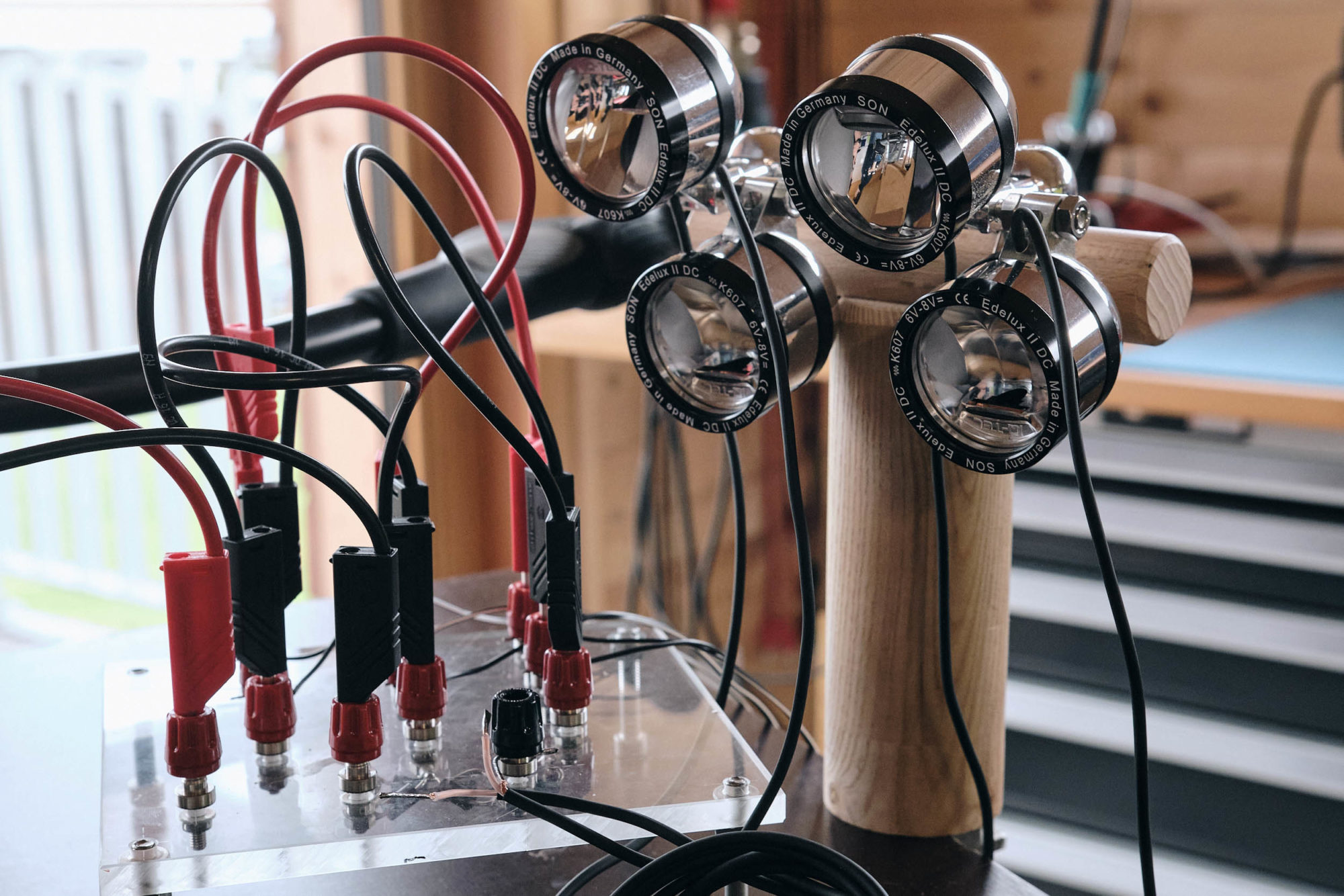
Daily business
While their core technology is nearly perfected, and Schmidt Maschinenbau is not in the habit of changing a well-running system for the sake of novelty, they’re hardly coasting on their success. The engineers are busy adapting to the new hub and brake standards the cycling industry keeps inventing. They’ve broadened their portfolio to include DC lights for e-bikes, cabling and junction boxes, complete wheels, and tools and fabrication accessories. Additionally, as some of the world’s foremost experts on robust, compact AC generators, they’re always in demand for projects not necessarily related to bicycles.
Schmidt currently ships out more than 20,000 hubs per year—that’s around 100 per day—and about half as many Edelux headlights and taillights. About 50 percent stay in Germany, while the other half is exported worldwide. Many high-end brands and framebuilders spec SON hubs on their bikes, and the company’s manufacturing flexibility means a big chunk of their development and production volume is dedicated to customized orders. If you want a 12mm thru-axle disc-less straight-pull hub in matte baby blue, Schmidt can deliver that, provided you take a couple hundred or thousand to make it worth their while.

Despite the seemingly simple product, accommodating each business customer’s unique demands is no small challenge. “Occasionally, we change something, and it just doesn’t work anymore until we figure it out,” Wilfried admits, chuckling. Even the experts are constantly learning.
As chief engineer, Wilfried is still intimately involved in research and development, though he’s mostly guiding his team of young engineers these days. “Sometimes, I can help them see an error I’ve made in the past,” he tells me. He walks me through the quirky custom projects scattered about the R&D area. There are drawers full of all the dynamo hubs they and other manufacturers have ever made, going back half a century, and quirky hubs they designed for one-off projects. One entire wall is dedicated to experimental hand-crank generators, and in the center stands a stationary bike for researching high-power dynamos. Their new hub test rig based around sensitive torque transducers is almost ready to replace their time-tested flywheel setup, which will speed up the development and quality control of more efficient next-generation hubs.
Much like their discreet dynamo hubs, the company in Tübingen runs silently day in and day out, intently focused on what they do best: precision engineering and manufacturing. The small teams in the light and hub assembly organize their shifts among themselves, and boy, are they early risers—I arrived there in the mid-afternoon just as the last technicians were already donning their helmets to cycle home. Everybody seems to know what to do to keep the flow going without much more than a production order to coordinate. For much of the insight about the company and its people, products, and processes, I have to thank Katrin, who’s responsible for marketing and knows the ins and outs of the company nearly as well as Wilfried himself.
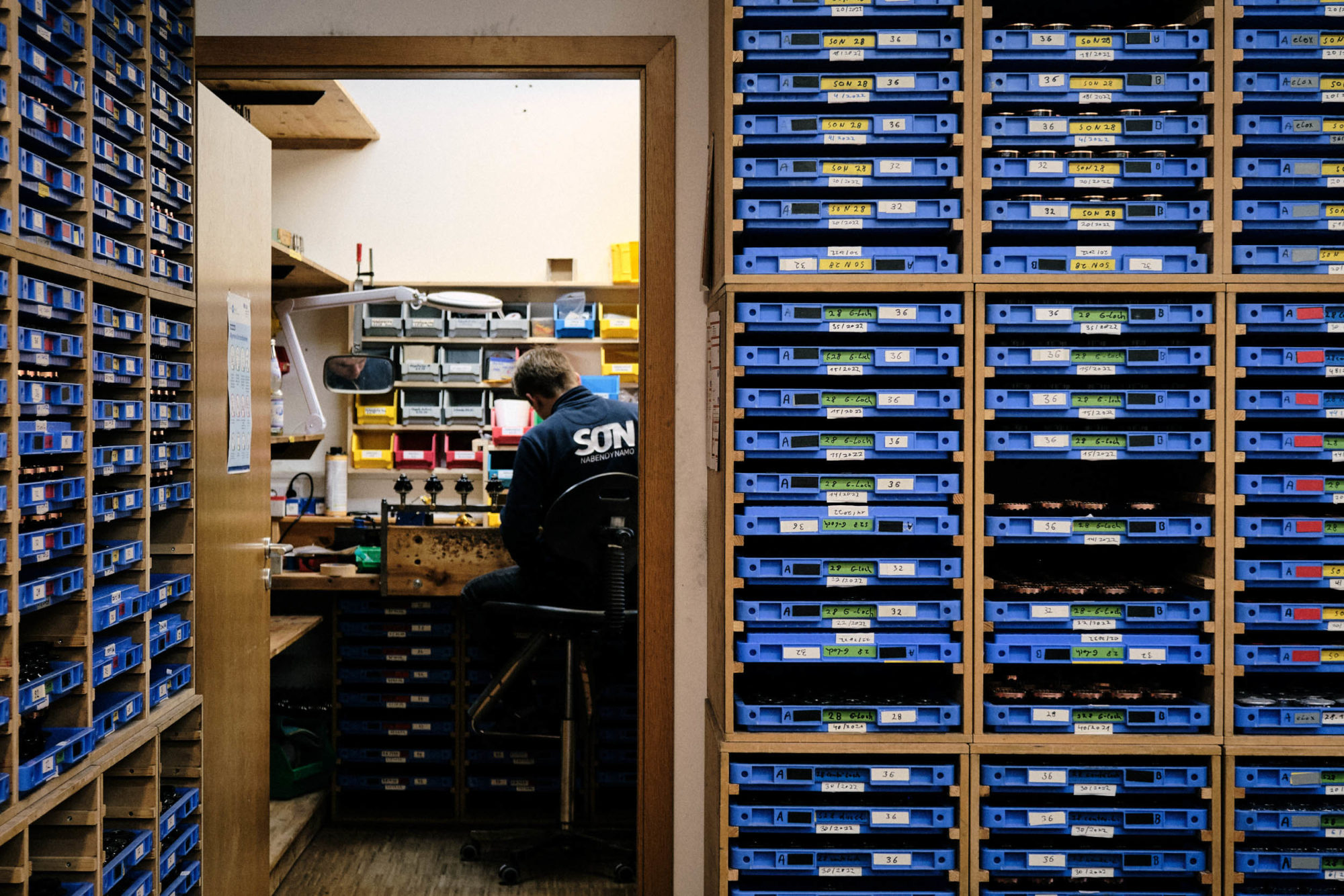
What I came away with is that the engineering excellence and commitment to long-term relationships on display at Schmidt Maschinenbau are simply the only way they know how to do what they do. They work in the engineering tradition that gave the label “Made in Germany” the worldwide renown it retains to this day. And their principled approach is paying dividends. Wilfried says their customers no longer call for lower prices, instead encouraging them to keep up the quality.
Speaking on the topic of growing their online presence and reaching more riders, Wilfried explains: “It’s on our mind, for sure, but we’ve been busy building hubs and planning our new building in the past two years.” In this age of frenetic marketing-driven production, they’re the exceedingly rare company that makes a product so good that it hardly needs active promotion. Despite minimal advertising—the SON Instagram account sits at a cool zero posts—Schmidt’s order books are full, and they’re counting the days until they have access to the additional manufacturing capacity the new facility will open up.
A bright future
Today, most dynamo hubs rolling on the road are made by Shimano, and Wilfried seems quite content with that state of affairs. In reality, they aren’t competing with the big manufacturers. Shimano and others made reliable lighting available to the average cyclist, which was Wilfried’s vision in the first place. “If Shimano weren’t producing so many, that would fall back on us,” he says. At Schmidt in Tübingen, they’re happy to continue serving the high end of the market and nudging the bar of quality upward, which is indirectly benefiting the broader bike lighting ecosystem and therefore all riders.
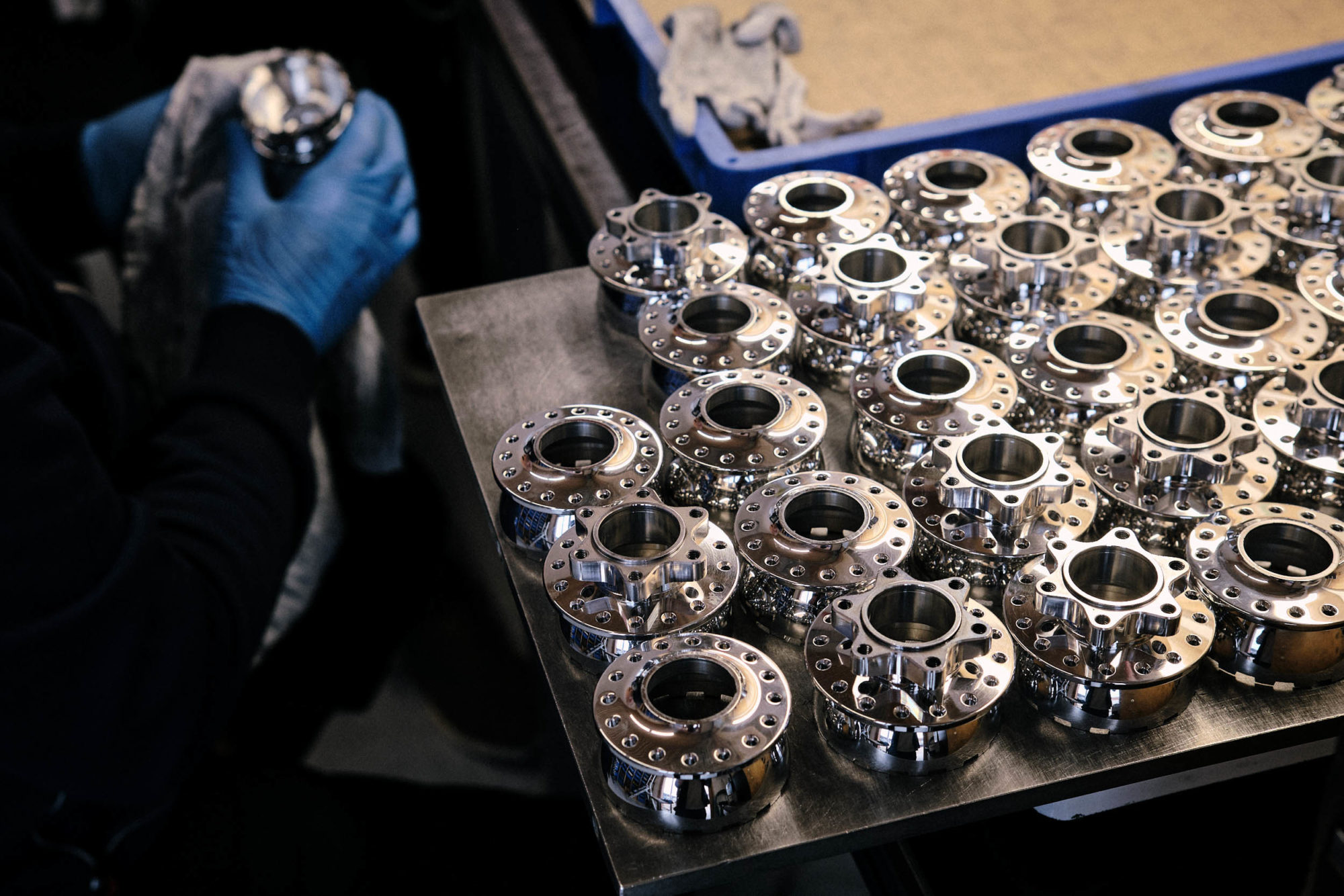
Today, many riders not only want to power their lights but also charge their various battery-powered devices. Though quite a few dynamo-powered USB chargers exist on the market, a SON charger remains curiously absent. Far from being unaware or indifferent, the idea has been incubating in the Schmidt R&D workshop for years, and they showed a prototype of a hub with integrated USB charger at a recent trade fair. The engineers could probably release a powerful dynamo charging system tomorrow; the challenge lies in making it work within the existing SON ecosystem. To name just one challenge, the same German StVZO regulations that stipulate sophisticated beamforming optics in bike lights also limit street-legal dynamos to the same age-old 6V/3W AC output, which puts a hard cap on the effectiveness of a dynamo lighting and charging setup. Presumably, such a system will be released when it’s reliable, compatible, and effective.
Hub power may seem obsolete in cycling’s increasingly electrified future, but Wilfried is unconcerned. “Some market segments will shrink, and some will grow. That’s just how it goes. We’re not worried, and we certainly won’t get bored,” he says with a grin. He makes a fine point calling e-bikes “electric motor cycles” while acknowledging their important role in sustainable mobility. He knows there will always be applications for resilient, muscle-generated electric power in the second golden age of the bicycle that they see as just beginning.
I wrap up my conversation with Wilfried by posing a final question: what’s the single most important thing you’d like people to know about SON? He thinks a bit before formulating an answer. “We’re in the business of providing a quality product, so that even the most demanding riders get a lot of use out of their dynamo hubs,” he finally responds. While he’s flattered to see SON hubs on flashy show bicycles, his true motivation is rooted in building utilitarian products that stand the test of time.
As I pedaled off home toward Berlin, feeling impressed by all I’d just seen and learned, I wondered, what is my purpose here? Beyond telling worthy stories, these field trips are also usually a kind of transaction, where behind-the-scenes access is exchanged for what amounts to free publicity. But SON is not a common brand; there’s no marketing curtain to pull back, and they neither seek the publicity nor really need it. Most delightfully, they’re far from secretive about their quality work, instead inviting me in and taking the time to tell their fascinating story and show me all around before quietly getting back to their business of refining and producing the world’s best dynamo hubs.

Related Content
Make sure to dig into these related articles for more info...
Please keep the conversation civil, constructive, and inclusive, or your comment will be removed.






